Lou’s Views
News & Views / September Edition
Our email distribution has changed.
The e-mails will now be sent to you from lousviews@hbpoin.ccsend.com.

Calendar of Events –

U.S. Open King Mackerel Fishing Tournament
October 3rd thru 5th
Southport
The U.S. Open King Mackerel Tournament has taken place since 1979 and is held annually the first week in October. The U.S. Open is one of the largest king mackerel tournaments on the East Coast and part of the SKA (Southern Kingfish Association) Tournament Trail. The tournament now attracts almost 400 boats annually.
For more information » click here

Riverfest
October 5th & 6th
Wilmington
.
.
Wilmington’s Riverfest is celebrated in October since 1979 and runs from the foot of Market Street to Cape Fear Community College over a half mile of free family entertainment.
For more information » click here

Sunset at Sunset
October 5th
Sunset Beach
Held the first Saturday in October each year, Sunset at Sunset is the Town of Sunset Beach’s Community Block Party. The annual autumn event has been celebrated since 2007, and is scheduled to happen again this year, in front of Ingram Planetarium on Sunset Boulevard in Sunset Beach.
For more information » click here
N.C. Oyster Festival
October 19th & 20th
Ocean Isle Beach
.
..
..
The annual North Carolina Oyster Festival has been taking place since 1978. Come celebrate everything Oyster with a variety of foods, crafts, contests, children’s activities, and musical performances at Mulberry Park in Shallotte. Signature Festival events include the Oyster Shucking Contest, Oyster Eating Contest, and Oyster Stew Cook-off.
For more information » click here

N.C. Festival by the Sea
October 26th & 27th
Holden Beach
.
Hosted by the Holden Beach Merchants Association this annual two-day festival which started in the 1980’s occurs on the last full weekend in October. The festival is kicked off with a parade down the Holden Beach causeway. There is a fishing tournament, horseshoe tournament, and a sandcastle building contest. Vendors provide food, arts and crafts, amusement rides and other activities. There is live musical entertainment both days at the Holden Beach’s Pavilion.
For more information » click here
 Discover a wide range of things to do in the Brunswick Islands for an experience that goes beyond the beach.
Discover a wide range of things to do in the Brunswick Islands for an experience that goes beyond the beach.
For more information » click here.
Calendar of Events Island –
 Shag Lessons
Shag Lessons
The Town of Holden Beach is taking names for an interest list for shag lessons at the Holden Beach Town Hall on Wednesday evenings, beginning October 16th and going through November 20th. The cost is $60 for residents for the series and $70 for non-residents. Beginners’ classes will run from 5:30-6:30 p.m. and intermediate from 6:30-7:30 p.m. You must have a dance partner in order to sign up. The instructor for the class will be Chuck Boney and participants will pay him directly. Register by emailing Christy at christy.ferguson@hbtownhall.com.
Note: The classes will only be held if there is enough interest.

Volunteer Appreciation Luncheon
The Town of Holden Beach will hold its annual Volunteer Appreciation Luncheon on Friday, October 25th at 11:30 a.m. Town board and committee members are invited to attend and bring a guest. Please RSVP by emailing Christy at christy.ferguson@hbtownhall.com with your name and the total number in your party.
 Barktoberfest
Barktoberfest
The Town of Holden Beach will hold Barktoberfest on Friday evening, October 25th. Owners and their dogs should meet at Bridgeview Park Picnic shelter at 5:00 p.m. where we will do a trick-or-trot around the block. There will be a doggie costume contest and fall pictures. Registration is required by October 4th. Email Christy at christy.ferguson@hbtownhall.com to register.
 Monster Mash Trunk-or-Treat
Monster Mash Trunk-or-Treat
The Town of Holden Beach will hold a trunk-or-treat on October 31st from 5:30-7:00 p.m. at Bridgeview Park. Residents, property owners, and businesses may register by October 11th to decorate your trunk and pass out candy. Trunks must be ready by 5:00 p.m. No political activity may be represented at the booth displays. There will be a prize for best decorated trunk and a costume contest held at 6:30 p.m. Categories include 3 and under, 4-7, 8-11, 12-15 and adult. Register by emailing Christy at christy.ferguson@hbtownhall.com. Those planning to attend the event may also email so that there is a headcount for candy purposes. In the email, please indicate whether you will be setting up a truck or trick-or-treating.

Dates to be determined for the following events:
SBI Three Bridge Tour
The South Brunswick Islands Rotary Club’s “SBI Three Bridge Tour” will be held on Saturday, November 4th. It offers you a unique opportunity to traverse our county and cruise across the three featured bridges of Sunset Beach, Ocean Isle Beach, and Holden Beach. Select a ride that is family friendly or one that will challenge you; each promises to be memorable. Proceeds from this event will be used to for local and international Rotary project with many projects providing experiences and learning opportunities that will enrich the lives of the children and youth in Brunswick County.
For more information » click here
 Veterans Appreciation Luncheon
Veterans Appreciation Luncheon
The Town will hold its Veterans Appreciation Luncheon on Monday, November 6th. The event will be held at 11:30 a.m. at the picnic shelter at Bridgeview Park. If the weather is not conducive to an outside event, we will move the event indoors at Town Hall. Please RSVP by calling 910.842.6488 prior to Wednesday, November 2nd with your name and the name of your guest.
 Contractors Information Seminar
Contractors Information Seminar
The Planning & Inspections Department, supported by the town staff, will be hosting the twelfth annual Contractors Information Seminar on Thursday, November 9th.
 Turkey Trot
Turkey Trot
The Town of Holden Beach will hold its annual Turkey Trot on Thanksgiving morning, November 23rd at 8:00 a.m. All individuals interested in participating should call 910.842.6488 to register. Please bring a canned food item to donate to the local food pantry.
 Tree Lighting
Tree Lighting
The Town of Holden Beach will hold its annual tree lighting ceremony on Thursday, November 30th at 6 p.m.
Parks & Recreation / Programs & Events
For more information » click here
Reminders –
 Free Cleanup Week
Free Cleanup Week
The Brunswick County Solid Waste and Recycling Division hosts two free clean up weeks a year, the third week in April and September. The next Free Cleanup Week at the Brunswick County Landfill will take place September 16th – 21st. Brunswick County property owners and residents can dispose of all materials, except for regular household trash and hazardous waste, at the Brunswick County Landfill free of charge during Free Cleanup Week events. Individuals can dispose of metal, tires, electronics, appliances, latex paint, clothing, shoes, used oil, oil filters, antifreeze, gasoline, fluorescent bulbs, used cooking oil, smoke detectors, household batteries, and yard debris in their designated areas at the landfill during this week. Participants must show proof of Brunswick County property ownership or residency.
Businesses and commercial vehicles will be charged normal tipping fees.
For questions, email Brunswick County Operation Services or call 910-253-2520.
LOCATION
Brunswick County Landfill
172 Landfill Rd NE
Bolivia, NC 28422
HOURS OF OPERATION
Monday through Friday :30 a.m. until 5:00 p.m.
Saturday 7:30 a.m. until 3:00 p.m.

Free Cleanup Week – Revised
The Free Cleanup Week at the Brunswick County Landfill will begin on Thursday, September 19th and will be extended into next week through Saturday, September 28th to allow residents additional time to benefit from this service following the storm.
 News from Town of Holden Beach
News from Town of Holden Beach
The town sends out emails of events, news, agendas, notifications, and emergency information. If you would like to be added to their mailing list, please go to their web site to complete your subscription to the Holden Beach E-Newsletter.
For more information » click here
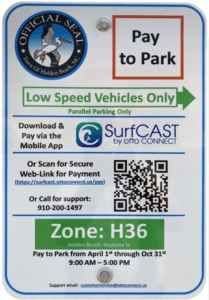 THB Newsletter (03/30/24)
THB Newsletter (03/30/24)
Paid Parking
Paid parking will be enforced starting April 1st in all Holden Beach designated parking areas. It will be enforced from 9:00 a.m. – 5:00 p.m. daily, with free parking before and after that time. All parking will use license plates for verification.
As a reminder, Holden Beach uses the “SurfCAST by Otto” parking solution. Annual passes are now available for purchase on the mobile app. You will also be able to purchase passes by scanning the QR-codes located on the parking signs for access to https://surfcast.ottoconnect.us/pay.
Rates for the 2024 season are as follows:
$5 per hour for up to four hours
$20 per day and for any duration greater than four hours
$80 per week (seven consecutive days)
$175 per calendar year for a single vehicle (annual passes)
Handicap parking is free in designated handicap spaces and only with a valid license plate or hangtag.
Parking rates can be paid via credit card, debit card or PayPal.
Visit https://hbtownhall.com/paid-parking for more information and to view a table with authorized parking areas.

Pets on the Beach Strand
Pets – Chapter 90 / Animals / 90.20
Effective September 10th
- Pets allowed back on the beach strand during the hours of 9:00am through 5:00pm
- Dog’s need to be on a leash
- Owner’s need to clean up after their animals

Solid Waste Pick-Up Schedule
GFL Environmental change in service, October through May trash pickup will be once a week. This year September 28th will be the the last Saturday trash pick-up until June. Trash collection will go back to Tuesdays only.
Please note:
. • Trash carts must be at the street by 6:00 a.m. on the pickup day
. • BAG the trash before putting it in the cart
. • Carts will be rolled back to the front of the house
GFL Refuse Collection Policy
GFL has recently notified all Brunswick County residents that they will no longer accept extra bags of refuse outside of the collection cart. This is not a new policy but is stricter enforcement of an existing policy. While in the past GFL drivers would at times make exceptions and take additional bags of refuse, the tremendous growth in housing within Brunswick County makes this practice cost prohibitive and causes drivers to fall behind schedule.
Solid Waste Pick-up Schedule –
starting October once a week
Recycling –
starting October every other week pick-up
 Yard Waste Service
Yard Waste Service
Yard debris is collected on the second (2nd) and fourth (4th) Fridays during the months of October, November, and December. Yard debris needs to be secured in a biodegradable bag (not plastic) or bundled in a maximum length not to exceed five (5) feet and fifty (50) pounds in weight. Each residence is allowed a total of ten (10) items, which can include a combination of bundles of brush and limbs meeting the required length and weight and/ or biodegradable bags. Picks-ups are not provided for vacant lots or construction sites.
Curbside Recycling – 2024
GFL Environmental is now offering curbside recycling for Town properties that desire to participate in the service. The service cost per cart is $106.88 annually paid in advance to the Town of Holden Beach. The service consists of a ninety-six (96) gallon cart that is emptied every other week during the months of October – May and weekly during the months of June – September.
Curbside Recycling Application » click here
Curbside Recycling Calendar » click here

Trash Can Requirements – Rental Properties
GFL Environmental – trash can requirements
Ordinance 07-13, Section 50.08
Rental properties have specific number of trash cans based on number of bedrooms.
* One extra trash can per every 2 bedrooms
..
§ 50.08 RENTAL HOMES.
(A) Rental homes, as defined in Chapter 157, that are rented as part of the summer rental season, are subject to high numbers of guests, resulting in abnormally large volumes of trash. This type of occupancy use presents a significantly higher impact than homes not used for summer rentals. In interest of public health and sanitation and environmental concerns, all rental home shall have a minimum of one trash can per two bedrooms. Homes with an odd number of bedrooms shall round up (for examples one to two bedrooms – one trash can; three to four bedrooms – two trash cans; five – six bedrooms – three trash cans, and the like).
Building Numbers
Ocean front homes are required to have house numbers visible from the beach strand.
Please call Planning and Inspections Department at 910.842.6080 with any questions.
§157.087 BUILDING NUMBERS.
(A) The correct street number shall be clearly visible from the street on all buildings. Numbers shall be block letters, not script, and of a color clearly in contrast with that of the building and shall be a minimum of six inches in height.
(B) Beach front buildings will also have clearly visible house numbers from the strand side meeting the above criteria on size, contrast, etc. Placement shall be on vertical column supporting deck(s) or deck roof on the primary structure. For buildings with a setback of over 300 feet from the first dune line, a vertical post shall be erected aside the walkway with house numbers affixed. In all cases the numbers must be clearly visible from the strand. Other placements may be acceptable with approval of the Building Inspector.
Storm Events –

Hurricane Vehicle Decals
Property owners will be provided with four (4) decals which were included in their April water bills. It is important that you place your decals in your vehicle or in a safe place. A $10 fee will be assessed to anyone who needs to obtain either additional or replacement decals. Decals will not be issued in the 24-hour period before an anticipated order of evacuation.
The decals are your passes to get back onto the island to check your property in the event that an emergency would necessitate restricting access to the island. Decals must be displayed in the driver side lower left-hand corner of the windshield, where they are not obstructed by any other items. Officials must be able to clearly read the decal from outside the vehicle.
Property owners without a valid decal will not be allowed on the island during restricted access. No other method of identification is accepted in an emergency situation. Click here to visit the Town website to find out more information regarding decals and emergency situations.
EVACUATION, CURFEW & DECALS
What is a State of Emergency?
A proclamation by the Town which enacts special ordinances and/or prohibitions during emergency situations to protect the public, public health and property. These prohibitions can include limitations on movement, curfews, directing of evacuations, controlling ingress and egress to the emergency area, alcoholic beverages, and more. State of Emergencies are issued in accordance with N.C.G.S. 166A-19.22.
What is a curfew?
A curfew is an order, typically during a State of Emergency, which requires all persons in the affected areas to remain on their own property. During a curfew, you are not free to move about public domain areas or on others’ property. Violations of a curfew could lead to arrest in certain situations.
What is a voluntary evacuation?
A voluntary evacuation creates a recommendation for all parties in the affected area to get their affairs in order hastily and evacuated.
What is a mandatory evacuation?
A mandatory evacuation means you must leave the area in which an order has been issued. With recent changes to the laws in North Carolina, you no longer have the option of staying in an area under an order of mandatory evacuation.
Why is the sewer system turned off during a storm/event?
Often the sewer system is turned off during storms which have the potential to create significant flooding on the island. The system is turned off to protect its integrity. If it were left on, it could pose a significant threat to the public health. When the system is manually shut down, it also greatly reduces the time needed to bring it back up after an event which equates to getting residents and guests back on the Island much faster.
Why is there a delay for decal holders to get back on the island once a storm ends?
After a storm, many things must occur before even limited access can be allowed. Some of those things include making sure the streets are passable; the sewer system must be restarted to comply with State laws; the utilities (water, sewer, electricity, propane supplies) must be checked to ensure no safety risk are present; and the post-storm damage assessment team needs to perform an initial assessment.
Where can I get up-to-date information during and after a storm or State of Emergency?
You can sign up for the Town email service by clicking here. The newsletter, along with the Town’s website will be the main sources of information during an emergency situation. Links to the Town’s official Facebook and Twitter pages can be found on the website. You can also download our app for Apple and Android phones by accessing the app store on your smart phone and searching Holden Beach.
Please refrain from calling Town Hall and Police Department phone lines with general information questions. These lines need to remain open for emergencies, storm management and post-storm mitigation. All updates concerning re-entry, general access, etc. may be found on the Town’s website and other media outlets.
Why do I see others moving about the island during a curfew?
If a curfew order is in place, you must stay on your own property. You may see many other vehicles moving about the Island. We often receive assistance from other local, state, federal and contract personnel during events. It is likely these are the personnel you are seeing, and they are involved in the mitigation process for the event. Please do not assume that a curfew order has been lifted and/or you are free to move about the island.
Can I check my friends’ property for them?
If a curfew order is in place, you may ONLY travel to your personally owned property. Traveling about the Island to check on others’ property is not allowed. is in place, you may ONLY travel to your personally owned property. Traveling about
Who can obtain decals?
Only property owners and businesses who service the island can obtain a decal.
How do I get decals for my vehicle…?
If I am an owner?
Decals will be mailed out in water bills to property owners before the season starts. Those owners who need additional decals can contact Town Hall. A fee may apply, please check the current fee schedule.
If I am a renter?
You must contact the owner of the property to obtain a decal.
If I am a business owner on the Island?
You must contact Town Hall to obtain a decal.
If I am a business owner off the Island that provides services on the Island?
You must contact Town Hall for eligibility and to obtain a decal.
When does my decal expire?
All decals expire on the last day of the calendar year as indicated on the decal.
Where do I put my decal on my car?
Decals must be displayed in the lower left-hand corner of the windshield, where they are not obstructed by any other items to include window tinting, other decals, etc. Officials must be able to clearly read the decal from outside the vehicle. Please note that re-entry will not be allowed if a current, intact decal is not affixed to the windshield as designated.
How do I replace a decal if I get a new vehicle?
If you trade a vehicle or otherwise need a replacement decal, you may obtain them from Town Hall during normal business hours. A fee may apply, check the current fee schedule.
Can I obtain a decal right before an emergency occurs?
While most of the storms we deal with are tropical in nature with some type of advanced warning, we do experience many other types of events that could create a State of Emergency without warning. All eligible parties should obtain decals as early as possible each year to avoid being denied access to the Island. Decals shall not be issued during the 24-hour period prior to an anticipated order of evacuation so staff can concentrate on properly preparing the Town for the storm/event.
Can I use a tax bill or another document for re-entry?
No. You MUST have a decal to re-enter the Island until it is open to the general public.
How does re-entry after a storm during a State of Emergency work?
The bridge is closed to all vehicle access, except for official vehicles. Once those with proper decals are allowed access, they must conform with the current rules in place by the specific State of Emergency Order. After all hazards have been rendered safe, the bridge will be opened to the general public. A curfew could remain in effect however, to ensure the safety and security of the Island and its residents and guests. Please understand this process typically takes days to evolve and could be significantly longer, depending on the amount of damage sustained. Please refrain from calling for times for re-entry, as those are often not set on schedule. Instead, stay tunes to local media outlets and official social media accounts for accurate updates.
How can I check on my property if access is limited to the Island?
Once it is safe, property owners with valid decals will be allowed back on the Island after a storm/event. At this point, you can travel to your property, in accordance with the rules of the specific State of Emergency Order currently in place.
If you live out of the area, please do not travel to the Island until you are certain you will be allowed access. Stay tuned to those media outlets and email services that are of official nature for this information. Also, be certain you have your current, valid decal properly affixed to your vehicle.
It is a good idea to be sure your contact information is current with the Town tax office as this is the location Town officials will use in the event you need to be contacted.
For more information » click here
NC General Statute 166A-19.22
Power of municipalities and counties to enact ordinances to deal with states of emergency.
Synopsis – The governing body may impose by declaration or enacted ordinance, prohibitions, and restrictions during a state of emergency. This includes the prohibition and restriction of movements of people in public places, including imposing a curfew; directing or compelling the voluntary or mandatory evacuation of all or part of the population, controlling ingress and egress of an emergency area, and providing for the closure of streets, roads, highways, bridges, public vehicular areas. All prohibitions and restrictions imposed by declaration or ordinance shall take effect immediately upon publication of the declaration unless the declaration sets a later time. The prohibitions and restrictions shall expire when they are terminated by the official or entity that imposed them, or when the state of emergency terminates.
Violation – Any person who violates any provisions of an ordinance or a declaration enacted or declared pursuant to this section shall be guilty of a Class 2 misdemeanor.
Turtle Watch Program –

Turtle Watch Program – 2024
The first nest of the 2024 season was on May 18th
Average annual number of nests is 59
Current nest count – 67 as of 09/22/24
Total known eggs = 5,571
Total baby turtles to ocean = 5,272 around 95%
Members of the patrol started riding the beach every morning on May 1 and will do so through October looking for signs of turtle nests.
For more information » click here
Total number of nests historically –
- 2012: 48
- 2013: 73
- 2014: 19
- 2015: 53
- 2016: 52
- 2017: 50
- 2018: 30
- 2019: 105
- 2020: 65
- 2021: 68
- 2022: 65
- 2023: 75
- 2024: 67
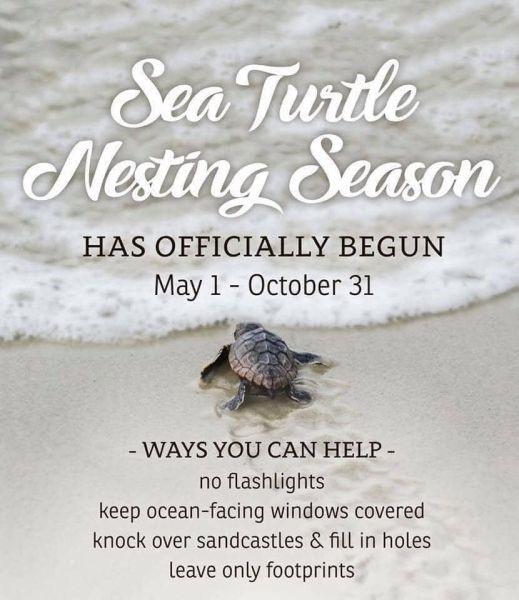
Upon Further Review –

A Second Helping
They just completed the twentieth year of the program. For the last fifteen (15) weeks they have collected food on Saturday mornings in front of Beach Mart; the food is distributed to the needy in Brunswick County. During this summer season, they collected 9,496 pounds of food and $1,692 in monetary donations. Their food collections have now exceeded three hundred and seven thousand (307,000) pounds of food since this program began in June of 2005. Hunger exists everywhere in this country. Thanks to the Holden Beach vacationers for donating again this year! Cash donations are gratefully accepted. One hundred percent (100%) of these cash donations are used to buy more food. You can be assured that the money will be very well spent.
Mail Donations to:
A Second Helping
% Sharon United Methodist Church
2030 Holden Beach Road
Supply, NC 28462
 ReadyBrunswick Emergency Notifications Alerts
ReadyBrunswick Emergency Notifications Alerts
Brunswick County uses ReadyBrunswick as part of the County’s effort to continuously improve communications during emergency situations within our area. Powered by Everbridge, the ReadyBrunswick notification system sends emergency notifications in a variety of communication methods such as:
- Landline (Voice)
- VoIP (Voice over Internet Protocol)
- Mobile (Voice)
- Mobile SMS (Text Messaging)
In the case of an emergency, you may choose to receive notifications via one or all of these communication methods. It’s recommended that you register several media options to receive messages in the event a particular communication device is unavailable.
For more information » click here
Covid –

Covid Cases Are Rising Again. Here’s What to Know.
The Centers for Disease Control and Prevention says that wastewater data shows high levels of viral activity nationwide.
As new variants of the coronavirus continue to gain traction, cases appear to be rising in much of the country. Two of those variants, KP.3 and an offshoot, KP.3.1.1., account for nearly half of all cases, and data from the Centers for Disease Control and Prevention shows high levels of viral activity in wastewater nationwide.
Here’s what to know about symptoms, testing and treatment if you do fall ill:
Symptoms to watch out for
There’s no evidence that symptoms of the new dominant variants, including those collectively known as the “FLiRT” variants, are any different than other recent strains of the virus, said Aubree Gordon, an infectious disease epidemiologist at the University of Michigan. The symptoms still include sneezing, congestion, headaches, sore muscles, nausea or vomiting. Many people also report exhaustion and a general “blah” feeling. In general, the more immunity you’ve built up from vaccination or past infections, the milder your next bout with the virus is likely to be. (Though it’s possible to experience more intense symptoms with a new infection than you’ve had in past Covid cases, and your symptoms can vary from one infection to the next.) The symptoms of Covid can look similar to those caused by allergies or other infections. The best way to tell the difference is to test.
When (and how) to test
In an ideal world, experts said, people would take a Covid test as soon as they develop symptoms or learn they were exposed, and then test again a day or two later. But if you only have a limited number of at-home rapid tests, there are a few ways to maximize their usefulness: Test immediately if you have a fever and a cough, said Dr. Davey Smith, an infectious disease specialist at the University of California, San Diego. If you have other symptoms but few tests on hand, you may want to wait a few days to test, to reduce the chance of a false negative. People who are immunocompromised, older or who have underlying health issues may want to test as soon as they feel sick or learn they were exposed, so they can start taking Paxlovid to reduce the severity of the illness, said Dr. Paul Auwaerter, clinical director of the division of infectious diseases at Johns Hopkins Medicine. If you’ve had symptoms for more than three days but are still testing negative, it’s unlikely you’ll ever test positive on an at-home test, Dr. Gordon said — either because you do not have Covid, or because you are shedding amounts of the virus that are too low for a rapid test to pick up. If you’re waiting to test, you should take precautions in the meantime to minimize the potential spread of the virus, like wearing a mask in public and isolating from others, said Dr. Paul Sax, the clinical director of the division of infectious diseases at Brigham and Women’s Hospital. Before using a test, check its expiration date. If it’s past the date, you can see whether it’s still usable by going through the F.D.A. database of tests. Be mindful in the summer months about where Covid tests are stored; leaving them in extreme heat for several days may make them less accurate. Health officials have also advised against using tests made by Cue Health.
Medications to prevent and treat Covid
In March, the F.D.A. approved a new medication for highly immunocompromised people, such as those receiving stem cell or organ transplants. The drug, Pemgarda, is a monoclonal antibody infusion that can be taken as a preventive measure, before people contract the virus. People age 12 and older who have tested positive can take Paxlovid within five days of developing symptoms. The medication halts the virus from replicating in the body and lowers the risk of death for people who are more vulnerable to severe disease. There is no evidence that Paxlovid is less effective against the current leading variants than previous strains of the virus, experts said. Scientists are still debating whether Paxlovid can reduce the risk of developing long Covid. There are two other antiviral treatments that doctors use much less frequently: remdesivir, or Veklury, which is given as an IV infusion to adults and children, and molnupiravir, known as Lagevrio, which is a pill that can be used to reduce the risk of severe disease in adults. Doctors advise resting as much as possible while sick. If you’re up for it, take a lap around the block — “you should not be completely inactive,” Dr. Sax said — but don’t push yourself. “Some people like to take long walks,” Dr. Smith said. “I just stay in bed and read a book. Basically, you just suffer through it.”
Read more » click here
New coronavirus vaccines are now approved. Here’s what to know.
The mRNA coronavirus vaccines from Pfizer-BioNTech and Moderna tailored for the KP.2 variant could be available within a week.
The Food and Drug Administration approved new mRNA coronavirus vaccines Thursday, clearing the way for shots manufactured by Pfizer-BioNTech and Moderna to start hitting pharmacy shelves and doctor’s offices within a week. Health officials encourage annual vaccination against the coronavirus, similar to yearly flu shots. Everyone 6 months and older should receive a new vaccine, the Centers for Disease Control and Prevention recommends. The FDA has yet to approve an updated vaccine from Novavax, which uses a more conventional vaccine development method but has faced financial challenges. Our scientific understanding of coronavirus vaccines has evolved since they debuted in late 2020.
Here’s what to know about the new vaccines.
Why are there new vaccines?
The coronavirus keeps evolving to overcome our immune defenses, and the shield offered by vaccines weakens over time. That’s why federal health officials want people to get an annual updated coronavirus vaccine designed to target the latest variants. They approve them for release in late summer or early fall to coincide with flu shots that Americans are already used to getting. The underlying vaccine technology and manufacturing process are the same, but components change to account for how the virus morphs. The new vaccines target the KP.2 variant because most recent covid cases are caused by that strain or closely related ones. Covid is less dangerous overall than it was earlier in the pandemic because our bodies have become used to fighting the virus off and nearly everyone has some degree of immunity from receiving shots or getting sick. A new shot is meant to shore up existing defenses. “It’s an opportunity to mitigate or to reduce that risk even further rather than just relying on what happened in the past,” said Robert Hopkins Jr., medical director of the National Foundation for Infectious Diseases and a physician in Arkansas.
Who needs a new coronavirus vaccine?
The United States differs from other countries in recommending an updated coronavirus vaccine for everyone except young infants, rather than just those at heightened risk for severe disease because they are 65 or older, are moderately to severely immunocompromised or have serious medical conditions. Health officials rejected a more targeted recommendation, with some contending that it’s easier to tell everyone to get vaccinated than to try to define what makes a person high-risk. Most Americans have a risk factor for severe covid, such as being overweight or having diabetes. Critics of this approach, including Paul A. Offit, a pediatrician and director of the Vaccine Education Center at Children’s Hospital of Philadelphia, worry that it detracts from the urgency of vaccinating vulnerable people who have a harder time mounting an immune response to the coronavirus.
Do the vaccines prevent infection?
You probably know by now that vaccinated people can still get covid. But the shots do offer some protection against infection, just not the kind of protection you get from highly effective vaccines for other diseases such as measles. The 2023-2024 vaccine provided 54 percent increased protection against symptomatic covid infections, according to a CDC study of people who tested for the coronavirus at pharmacies during the first four months after that year’s shot was released. “People who get vaccinated are much less likely to get infected in the first place,” said David J. Topham, director of the University of Rochester Translational Immunology and Infectious Disease Institute. “We’d love vaccines to be perfect, but Mother Nature is pretty damn smart.” A nasal vaccine could be better at stopping infections outright by increasing immunity where they take hold, and one is being studied in a trial sponsored by the National Institutes of Health. If you really want to dodge covid, don’t rely on the vaccine alone and take other precautions such as masking or avoiding crowds. But if you want to carry on with life as normal, a new vaccine lowers your risk of getting covid — at least in the short term.
Do the vaccines help prevent transmission?
You may remember from early coverage of coronavirus vaccines that it was unclear whether shots would reduce transmission. Now, scientists say the answer is yes — even if you’re actively shedding virus. That’s because the vaccine creates antibodies that reduce the amount of virus entering your cells, limiting how much the virus can replicate and make you even sicker. When vaccination prevents symptoms such as coughing and sneezing, people expel fewer respiratory droplets carrying the virus. When it reduces the viral load in an infected person, people become less contagious. That’s why Peter Hotez, a physician and co-director of the Texas Children’s Hospital Center for Vaccine Development, said he feels more comfortable in a crowded medical conference, where attendees are probably up to date on their vaccines, than in a crowded airport. “By having so many vaccinated people, it’s decreasing the number of days you are shedding virus if you get a breakthrough infection, and it decreases the amount of virus you are shedding,” Hotez said.
How long does vaccine protection last?
CDC data shows that the effectiveness of the 2023-2024 vaccine, meant to reduce emergency room visits and hospitalizations, declined sharply more than four months after receiving it. But the risk of hospitalization still remains low for most people, which made it harder for the CDC to compare outcomes for people who received an updated shot with those who did not. The CDC usually recommends a second dose for those at greatest risk, rather than everyone. Vaccines create antibodies that target the spike protein of a virus that enters a cell, but the spike protein is often evolving to overcome them or avoid detection. Other elements of the immune response, such as killer T cells, are more durable and recognize the additional parts of the virus that are not mutating. “Once the virus gets in, [T-cells] can kill off infected cells,” Topham said. “They can slow the infection down. They can prevent it from spreading throughout the body. It shortens your disease.”
Do vaccines prevent long covid?
While the threat of acute serious respiratory covid disease has faded, developing the lingering symptoms of “long covid” remains a concern for people who have had even mild cases. The CDC says vaccination is the “best available tool” to reduce the risk of long covid in children and adults. The exact mechanism is unclear, but experts theorize that vaccines help by reducing the severity of illness, which is a major risk factor for long covid.
When is the best time to get a new coronavirus vaccine?
It depends on your circumstances, including risk factors for severe disease, when you were last infected or vaccinated, and plans for the months ahead. It’s best to talk these issues through with a doctor. If you are at high risk and have not recently been vaccinated or infected, you may want to get a shot as soon as possible while cases remain high. The summer wave has shown signs of peaking, but cases can still be elevated and take weeks to return to low levels. It’s hard to predict when a winter wave will begin. If your priority is to avoid getting sick ahead of the holidays or a major event such as an international vacation, you could get your vaccine a month ahead of the event to increase your protection. If you were recently vaccinated, the FDA advises waiting two months since your last shot to get the updated vaccine. The CDC has previously said people can wait three months after an infection to get vaccinated. Manisha Juthani, Connecticut’s public health commissioner, said people who have recently had covid could time their next vaccine several weeks before a holiday when they will be exposed to a lot of people, whether that’s Halloween, Thanksgiving or end-of-year celebrations.
Where do I find vaccines?
Coronavirus vaccines are sold as a commercial product and are no longer purchased and distributed by the federal government for free. That means they won’t be as readily accessible as they once were, but they shouldn’t be too hard to find. CVS said it expects to start administering them within days, and Walgreens said that it would start scheduling appointments to receive shots after Sept. 6 and that customers can walk in before then. Availability at doctor’s offices might take longer. Finding shots for infants and toddlers could be more difficult because many pharmacies do not administer them and not every pediatrician’s office will stock them given low demand and limited storage space. This year’s updated coronavirus vaccines are supposed to have a longer shelf life, which eases the financial pressures of stocking them. The CDC plans to relaunch its vaccine locator when the new vaccines are widely available, and similar services are offered by Moderna and Pfizer.
Are coronavirus vaccines free?
Most insurance plans are required to cover recommended vaccines under the Affordable Care Act, but some may not cover shots administered by out-of-network providers. Officials say billing code errors and failure to update systems that led to improper charges last year should mostly be resolved, but if you are still getting charged for vaccines, you or your provider should contact your insurance company or appeal to the agency that regulates your plan. The federal Bridge Access Program, which provided free coronavirus vaccines to people without health insurance, ends this month. People might be able to find other assistance through federally qualified health centers, local health departments or nonprofit groups.
Can you get your covid and flu shot together?
Public health officials encourage receiving covid and flu shots in the same visit as a way to increase vaccination rates, and say that no serious side effects associated with co-administering the vaccines have been identified. But if you are someone who will get both vaccines no matter what, it could be beneficial to space them apart. Flu shots are best administered in September or October, so it might make sense to get a flu shot first with a coronavirus vaccination later if you already had covid this summer. Coronavirus vaccine manufacturers are working on combination flu/coronavirus shots. Moderna reported promising trial results that keep it on track to go to market as early as fall 2025. Pfizer-BioNTech reported mixed results from its trials, a setback.
Read more » click here
New Covid Vaccines Are Coming. Here’s What to Know.
We asked experts about the right time to get a shot, and how long protection will last.
The Food and Drug Administration approved updated Covid-19 vaccines on Thursday, paving the way for the shots to soon land in pharmacies, doctors’ offices and health centers. The Centers for Disease Control and Prevention has said it will recommend that adults and children six months and older get updated vaccines. Here’s what to know.
How are the new shots different?
The F.D.A. approved one vaccine from Pfizer and one from Moderna. Representatives from the drug companies said that their shots were ready to ship immediately after approval. Both vaccines target KP.2, a strain of the coronavirus that started to spread widely this spring. The variants that are most prevalent in the United States right now are very similar to KP.2, and so the vaccines should protect against them. “When the match is very good, as we anticipate it would be with the current circulating strains, you get actual protection from infection for several months,” said Dr. Paul Sax, the clinical director of the division of infectious diseases at Brigham and Women’s Hospital in Boston. The vaccine that rolled out last fall, by contrast, was geared at an older variant that has since petered out. The biotechnology company Novavax is waiting for the F.D.A. to authorize its retooled vaccine, which will target JN.1, a variant that is also close to the strains circulating widely now.
What if I just got a vaccine?
If you received a dose of the older vaccine this summer, you may not be able to get an updated vaccine immediately — the shots need to be spread out. People who are at high risk of developing severe disease should talk with a health care provider about the ideal interval between vaccines, said Fikadu Tafesse, a virologist at Oregon Health & Science University.
What if I just had Covid?
If you’re one of the many Americans who was infected during the summer, you may want to wait a few months to get a new shot. Rushing out to get one right after you were ill won’t give you much of an added benefit, because you already have strong protection,” said Aubree Gordon, an infectious disease epidemiologist at the University of Michigan. The C.D.C. has previously said that people can wait three months after a Covid infection to get a vaccine.
How fast does protection kick in?
It takes around a week or two after getting vaccinated for antibodies to rev up and defend against the virus. Antibodies peak about a month after vaccination, Dr. Gordon said. Once you are vaccinated, you have a lower risk of infection for at least several weeks, said Dr. Peter Chin-Hong, an infectious disease specialist at the University of California, San Francisco. “It might even be longer than that,” he said, because the vaccines are so closely matched to the dominant variants that are currently circulating. And the vaccines will provide protection against the worst outcomes from Covid — developing severe disease, getting hospitalized and dying — for months.
When should I get vaccinated?
People who are at highest risk for severe disease, including those who are 65 and older, people who are immunocompromised and those with underlying medical conditions, should get the updated vaccines as soon as they are available, Dr. Sax said. “There’s a lot circulating in the community now — that would help protect them,” he said. People who are not at high risk may want to wait until October, Dr. Chin-Hong said, both to gain protection heading into the winter and holiday gatherings, and so that they can get flu shots at the same time. “Convenience trumps everything,” he said.
Can I get it for free?
Many private insurance plans, along with Medicare and Medicaid, cover the cost of Covid shots. And children can receive free vaccines through a federal program. The C.D.C.’s Bridge Access Program, which has provided about 1.5 million free Covid shots to uninsured and underinsured people, will not be renewed for this year. But Dr. Demetre Daskalakis, director of the C.D.C.’s National Center for Immunization and Respiratory Diseases, said that the agency had found $62 million in unused vaccine contract funding that would be sent to state and local immunization programs to help cover the cost of shots.
Read more » click here
Corrections & Amplifications –
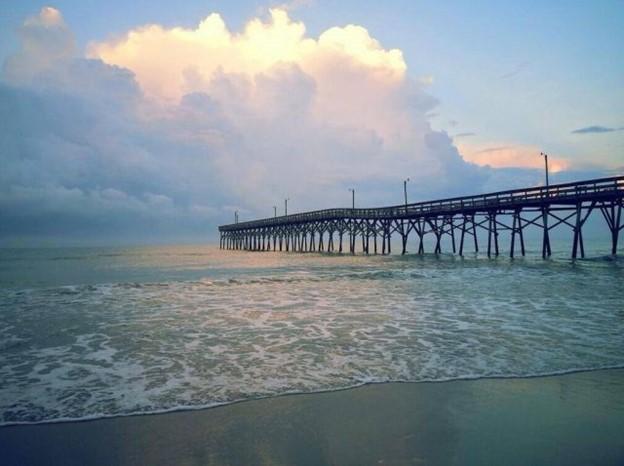 What to know as plans to restore this BC fishing pier inch forward
What to know as plans to restore this BC fishing pier inch forward
Evening walks on the pier and afternoon fishing trips are classic parts of any beach trip. This year, however, marks the second summer in a row that Holden Beach visitors and residents have missed out on those memories. The Holden Beach Fishing Pier has been closed to the public since 2022, after the town purchased the pier and pier house property for around $3.3 million – without plans in place for its future. The Holden Beach Board of Commissioners got to work assessing the pier’s existing structural issues and forming a conceptual plan to renovate the property. After approving a final site plan for the property in February 2023, new board members were elected in November 2023. In December, the board was set to act on bids received for the renovation project. Instead, the board paused the project to allow the new board members to get caught up on its status and scope.
Here’s where things stand now.
Project slowly moving forward again
Earlier this year, a public input session was held to allow the public to review plans for the pier and offer their thoughts. Following that meeting, the town’s board of commissioners is inching forward with the project once again. In April, the board approved a pier property development plan to serve as a “baseline approach” and “starting point” for the development. That plan notes the repairs to the existing structure will likely need to occur in phases as funding is available. The plan suggests those phases would be to stabilize the existing structure, complete safety repairs, complete remaining repairs and extend the pier, in that order. The adopted plan also notes that, due to cost, the pier would likely be replaced with a new wood pier, rather than a concrete pier. “Although a concrete pier is preferred, it may not be financially supportable for a small tax base like Holden Beach,” the document states. Additionally, the plan notes that funding for a pier replacement would likely require financing through a loan or bond.
What’s next?
In May, the board voted to direct staff to develop a request for proposals (RFP) to move forward with accomplishing the first few tasks outlined in the pier property development plan: Preliminary design and receiving cost estimates for the repair or replacement of the pier.
Read more » click here
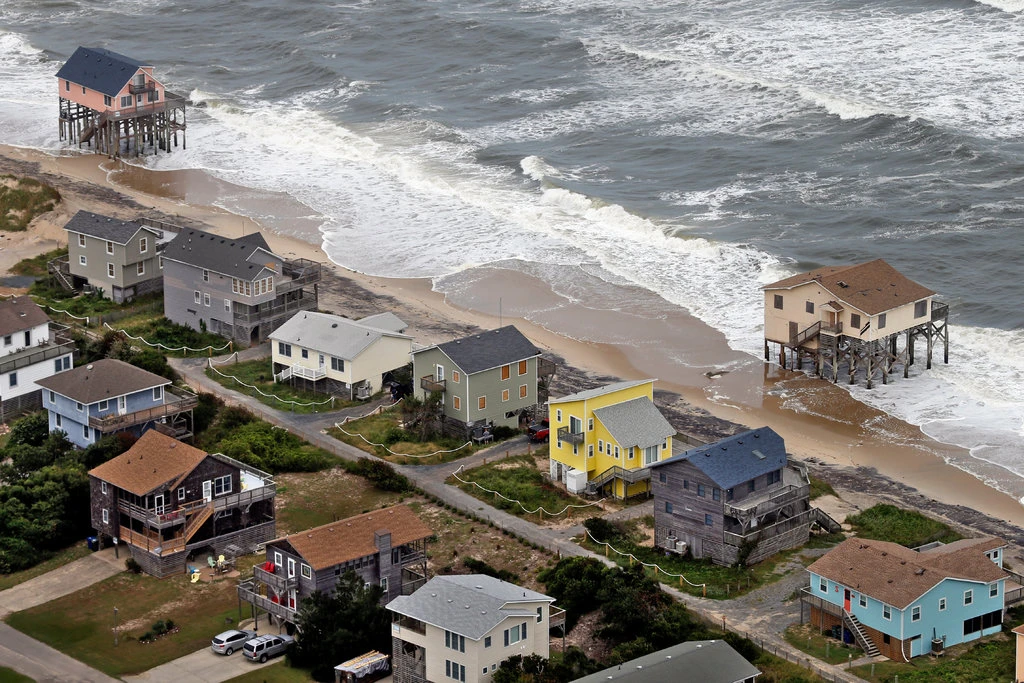 Flood history questions added to real estate disclosure form
Flood history questions added to real estate disclosure form
Sometimes it’s a puzzle why people don’t ask more questions, such as, “Has the river that’s down your road ever flooded your house, the house I’m thinking of buying?” The maxim “buyer beware” is wise advice no matter where a house is situated, but it’s good to have rules in place to cover homebuyers’ backs for the things they overlook or wrongly assume. As of July 1, prospective real estate buyers in North Carolina must now be provided the required North Carolina Real Estate Commission residential disclosure form by the seller that for the first time includes questions related to a property’s flood risk. The change in the form was requested in a petition for rulemaking filed by the Southern Environmental Law Center in December 2022 on behalf of the Natural Resources Defense Council, or NRDC, the North Carolina Justice Center, MDC Inc., the North Carolina Disaster Recovery and Resiliency School, Robeson County Church and Community Center, and NC Field. “Most of those are small, local nonprofits that respond to disasters,” Brooks Rainey Pearson, senior attorney with the law center, told Coastal Review in an interview, referring to petitioners. “So, we really wanted to give a voice to the people on the ground who deal with the fallout from flooding.” Pearson said that the Real Estate Commission had quickly granted the petition at the time and agreed to add the questions proposed by petitioners. It was then delayed by mutual agreement, she said, to adjust the law to allow the commission to merely make changes in the form. That would avoid having to go through a lengthy rulemaking process. “It was a longer journey than it should have been, but not because of any pushback,” she said. “I think everyone understands that homebuyers deserve to know if the property has flooded before.” Questions about flooding that have been added to the disclosure statement include the following: Is the property located in a federal or other designated flood hazard zone? Has the property experienced damage due to flooding, water seepage or pooled water attributable to a natural event such as heavy rainfall, coastal storm surge, tidal inundation, or river overflow? Is there a current flood insurance policy covering the property? Is there a flood or Federal Emergency Management Agency elevation certificate for the property? Has (the property owner) ever filed a claim for flood damage to the property with any insurance provider, including the National Flood Insurance Program? The form also notes that the requirement to obtain flood insurance passes down to all future owners for those properties that have received disaster assistance. Joel Scata, senior attorney with the NRDC, a national environmental nonprofit organization that is one of the petitioners, said that in the past, the only flood information that had to be disclosed to homebuyers in North Carolina was whether the property was in a floodplain. “Now with the changes, a buyer is going to have access to much more detailed information,” he told Coastal Review. According to state law, residential property owners are required to complete the disclosure statement and provide it to a buyer before an offer is made to purchase the property. New construction or never-occupied properties are exempted. Every question must be answered with “Y,” “N,” “NR” or “NA” for “Yes,” “No,” “No Representation,” and “Not Applicable,” respectively. Despite stern language in the form about requirements, there is enough gray area to give pause to anyone with insight into human failings. “An owner is not required to disclose any of the material facts that have a NR option, even if they have knowledge of them,” the statement says. Also: “If an owner selects NR, it could mean that the owner (1) has knowledge of an issue and chooses not to disclose it; or (2) simply does not know.” The form does warn that failure to disclose hidden defects “may” result in civil liability. It also assures that if an owner selects “No,” it means that the owner is not aware of any problem. But if “the owner knows there is a problem or that the owner’s answer is not correct, the owner may be liable for making an intentional misstatement.” If an owner selects NA, it means the property does not contain that particular item or feature. Scata said that he believes that whatever remedies are available for enforcement are strictly civil, and do not include criminal charges in the case of fraud or misrepresentation. “A buyer could file a civil suit, claim that the seller intentionally misled the buyer, make a fraud claim,” he said. But damages and other penalties would depend on the impact of what wasn’t disclosed, he added. A buyer should take any “NR” answer as a cue to ask the owner about what they don’t want to disclose, Scata said, adding “it’s a good indication that something is wrong with the property.” That choice could not be removed from the form unless it was done through a change in the legislation, he said. “The buyer always has the right to go back and explicitly ask the seller the question,” he said. And don’t just push the question with the buyer, he said, but also go talk to neighbors about the situation with flooding episodes in the neighborhood. Also, real estate brokers by law have a duty to disclose what they know, or reasonably should know, regardless of the seller’s response. “So, if a seller says something like ‘No, there’s never been (flooding) on the property,’” Scata said, “but the Realtor knows that’s not true, there’s a duty on them to disclose. And they can be liable if they are complicit in that fraud.” In that instance of potential fraud by a broker, the buyer can file a complaint with the Real Estate Commission. According to an NRDC press release, homes in North Carolina with prior flood losses would be expected to average an annual loss of $1,211, compared to $61 for the average home. In 2021, there were 13,237 homes purchased that were estimated to have been previously flooded. The expected annual flood damage totals for those homes were estimated at about $16 million. With climate change causing more intense rain and stronger storms, flooding is only going to become more of an issue, Pearson said. “Before when you only had to disclose if the house was in a floodplain, well, that’s no longer a good indicator of whether your house might flood,” she said. “The best indicator of whether your house might flood is whether it’s flooded before. And so, we think, just for the sake of transparency, people deserve to know that. But they also deserve to know that because — I believe it’s called behavioral economics — when people have more information, they’ll make different and better decisions.”
Read more » click here
Odds & Ends –

Storm Lashes the Carolinas With Historic Amounts of Rain
More than a foot of rain fell on parts of North Carolina for over 12 hours, catching residents, officials, and forecasters by surprise.
A powerful storm system that was not quite a tropical storm dropped historic amounts of rainfall in southeastern North Carolina on Monday, forecasters said, leading to flooded businesses and collapsed roads in a region hit by Tropical Storm Debby just last month. Despite having tropical storm force winds above 39 miles per hour, the storm fell technically short of becoming what would have been the eighth named storm of this year’s Atlantic hurricane season, Helene. But even without the name, the hazards were the same. The storm unleashed flash flooding and wind gusts stronger than 60 m.p.h. along the North Carolina coast, forecasters with the National Hurricane Center said on Monday afternoon. Debby brought more than a foot of rain across some parts of the Carolinas in August, and forecasters did not initially expect that much rain to fall on Monday. But by early afternoon, some locations in North Carolina had already seen nearly 15 inches of rain, catching residents, officials, and forecasters by surprise. More than 18 inches of rain fell in Carolina Beach between midnight Sunday and Monday afternoon. Forecasters in Wilmington called the likelihood of that amount of rain occurring in only 12 hours a one-in-a-thousand-year event. The National Weather Services pushed flash flood warnings for parts of Raleigh, N.C., Fayetteville, N.C., and surrounding areas issued on Monday night into Tuesday. Northern Cumberland County got about four to five inches of rain by late Monday. Larry Ashley, a retiree in Southport, N.C. where some of the flooding and road damage took place on Monday, said the rain was unlike anything he’s seen before. “It was like having a bucket of water dumped on you constantly,” he said. Mayor Lynn Barbee of Carolina Beach, a town just south of Wilmington, said that many parts of his town were two to three feet underwater on Monday. Emergency teams made dozens of rescues in the area on Monday and most businesses downtown were impacted by floodwaters, the mayor said. He added that Monday was the third major flooding event in Carolina Beach in the past few months that the town did not anticipate. He said he knew the storm would be an issue when the wind began to pick up and it sounded like a hurricane. “We sort of feel like we’re in rainstorm alley,” Mr. Barbee said. The fire department in Wilmington made multiple water rescues in Carolina Beach and Kure Beach, where the water was waist-deep, according to a post on its Facebook page. New Hanover County Fire Rescue said in a social media post that it saved two people trapped in a car. Schools in New Hanover County dismissed all students early on Monday and said classes on Tuesday would be conducted remotely. Some students at Carolina Beach Elementary were taken home early on Monday by emergency vehicles when flooding began and parents were unable to reach their children, Mr. Barbee said. Tuesday classes were canceled for schools in neighboring Brunswick County, which closed government offices on Monday because of a declared state of emergency. WECT, a television station in Wilmington, showed footage of cars and cargo vans stuck in floodwaters, as well as road closures in the area. Several roads in Brunswick County collapsed or partially collapsed on Monday, according to posts made on Facebook by the Brunswick County Sheriff’s Office. Officials in Southport, about 30 miles south of Wilmington, closed the roads to all incoming traffic on Monday and told residents to shelter in place at their homes or places of work, according to the city’s Facebook posts. Chris Adams, a supervisor for Omni Electric in Wilmington, said on Monday evening that two of his works crews had been stuck moving through flooded stretches of Highway 17 in Brunswick County since 10:30 a.m. and were still unable to make it home. He said parts of the road had been washed out and some were still underwater. “I don’t think anyone expected it to be as bad as it is,” he said.
Key things to know:
- The storm system is expected to continue to move slowly inland Monday night into Tuesday, spreading heavy rain across North Carolina. On Tuesday, the remnants of the storm will move into Virginia, bringing the potential for some flooding rains across the commonwealth into Wednesday morning.
- More akin to a typical storm system over the United States, the storm’s energy came from interacting air masses instead of from the rising warm, humid air of the ocean that feeds tropical cyclones.
- As the storm approached land, its winds weakened below tropical storm force (39 m.p.h. or greater), prompting the hurricane center to drop the tropical storm warnings that had flanked the coast.
Read more » click here
Storm thrashes NC coast: historic rainfall, crumpled roads
While potential tropical cyclone No. 8 was moving across the Carolinas Tuesday, parts of central and southeastern North Carolina was dealing with the aftermath — historic rainfall, road washouts and flash flooding. National Weather Service forecasters began tracking the low-pressure system off the coast of the Carolinas late last week. The center of the low pressure was onshore near Myrtle Beach, South Carolina, by the 5 p.m. Monday update and did not develop into a subtropical or tropical storm as forecasters had said was possible. As of 1:40 p.m. Tuesday, the remnants of the low were “well inland over” South Carolina, forecasters said. Several inches of rain associated with the low-pressure system dumped on coastal North Carolina Sunday and Monday. “Brunswick and southern New Hanover counties measured 12 to 20 inches, largely confirming radar estimates,” forecasters said, adding much of that fell within a 12-hour period Monday. “This storm brought historic rainfall totals and flash flooding to portions of New Hanover and Brunswick counties in Southeastern North Carolina. Climatological analyses preliminarily indicate local rainfall of this magnitude is expected to occur at a point, on average, once every 200 to 1000 year,” National Weather Service’s Wilmington office meteorologists said in an email Tuesday morning. Southport and Carolina Beach were among the towns that experienced more than 15 inches of rainfall. Each was closer to 20 inches. Carolina Beach Town Manager Bruce Oakley told Coastal Review Tuesday afternoon that it had been a “crazy” 24 hours. “We rescued 115 people and 14 animals from homes and cars since yesterday morning, Things are improving, but we are still pumping water from our lake and other areas,” Oakley said. “There are also still a few roads under water including a section of the main thoroughfare through town. We did our initial damage assessment today and expect damages to residential, commercial, and public property to be well over a million dollars.” Southport Public Information Officer ChyAnn Ketchum told Coastal review Tuesday afternoon that residents and visitors are urged not to leave their houses unless absolutely necessary. The only way into and out of Southport as of this report was N.C. Highway 87. Officials fully closed N.C. Highway 211 and Moore Street because of collapsed road or bridges. “There is still quite a bit of standing water around the city and in people’s yards, with many people experiencing flooding in their yards and homes. We are encouraging all residents, businesses, and property owners to document any damage with photos and videos and to measure water levels,” she said.” “The devastation in Southport and Brunswick County is devastating, but Southport is resilient.” Bald Head Island officials said Tuesday that several of the island’s main roads were unpassable, and they advised against traveling. The ferry that is the only link between the island and mainland had suspended operation. Brunswick County and its towns and townships, Boiling Springs Lakes, Oak Island, Southport, Saint James, Sandy Creek, Bolivia, Bald Head Island and Varnamtown were under a state of emergency. Brunswick County Communications Director Meagan Kascsak said late Tuesday that the total number of damages is still being assessed as the response is ongoing and some damaged roads may still be under water. “We will be able to make greater assessment of damages to structures when the period of threat is over and as we transition to recovery efforts,” she said. Farther north, the National Weather Service Newport/Morehead City office forecasters reported rainfall in its coverage area as ranging between 1 and almost 8 inches over the past 48 hours. This office serves the area from the North Carolina-Virginia border to where Onslow and Pender counties meet. Parts of Carteret and Onslow counties saw the highest rainfall amounts, with volunteers in Beaufort and Morehead City recording around 7.5 inches during that time, Atlantic Beach around 6.63 inches, and Jacksonville recording 5 to 7.88 inches. Counties in the northeastern part of the state saw no rain or only up to 4 inches. The low-pressure coincided with one of this year’s king tides Sept. 15-23, which are the highest high and lowest low tide events of the year.
Storm response
State emergency response, highway patrol and transportation officials were still responding to closures and reports of damage in the southeast, the governor’s office announced Tuesday afternoon. “Yesterday’s weather system reinforces why we prepare for the worst impacts of a storm and do not focus on the category or whether it is a named system,” Gov. Roy Cooper said in a statement. “As we move into today, please be safe as there are many roadways impacted and unsafe conditions persisting around the state. Check on your neighbors, do not drive through flooded areas and do not let your guard down, as additional rainfall is expected through the afternoon.” The storm compromised infrastructure, washing out roads and damaging culverts. Though the road closures were changing constantly, throughout the day Tuesday there were between 45 and 50 closures in the state. More than two dozen closures were just in Highway Division 3, which covers Sampson, Duplin, Brunswick, New Hanover, Onslow, and Pender counties. “Do not drive through standing or moving water. It does not take much water to cause a vehicle to lose control or float,” Cooper’s office said. Visit DriveNC.Gov for the latest roadway conditions. “North Carolina Emergency Management is continuing to support the impacted communities across our state, especially in Brunswick and New Hanover Counties, to ensure that any needs are met. A part of this support will include an assessment of damages when safe to do so that will help to inform recovery efforts as quickly as possible,” Emergency Management Director Will Ray said in the release. North Carolina Department of Transportation Communications Officer Lauren Haviland said Tuesday that NCDOT was assessing roads to determine the repairs needed. “While the weather has improved, the N.C. Department of Transportation continues to urge people to stay at home for their safety and the safety of others, including emergency responders. The Department is working as quickly as possible to assess the damage and repair roads,” Haviland said. Division 1 Communications Officer Tim Hass said Tuesday the only closure in the region that includes the Outer Banks was N.C. Highway 12 at the north end of Ocracoke Island. That area was closed Monday night due to ocean over wash, but the road is expected to be reopened by noon Wednesday, according to NCDOT. “Other than that, we’ve had some sand and water on N.C. 12 in places, but no other closures,” he said.
Post-storm advisories
State recreational water quality officials on Monday advised that the public avoid swimming coastal waters from Mason Inlet down to Shallotte Inlet, to include Holden Beach, Long Beach, Oak Island, Caswell Beach, Bald Head Island, Kure Beach, Carolina Beach, and Wrightsville Beach that are being heavily impacted by Tropical Cyclone 8. State recreational water quality officials advise avoiding the floodwaters being pumped to waters at two oceanfront towns to minimize the flooding damage and to ensure roads are accessible for emergency vehicles. Emerald Isle began Monday pumping floodwater into the ocean at Doe Drive, and on Tuesday at Fawn Drive, Seventh Street, and 15th Street, and into the sound at Channel Drive. Oak Island has pumped floodwater into the ocean near Crowell Street. Town officials will place signs at the discharge site along the ocean beach to warn the public of the possible health risk and will remove the signs 24 hours after the pumping stops. State officials will notify the public after the signs are removed. Water consumers of Brunswick County Public Utilities in St. James on Cedar Crest Drive, Oak Bluff Circle, Glenscape Lane, Pinecrest Drive and Pine Bluff Circle advised to boil all water or use bottled water for drinking, making ice, brushing teeth, washing dishes, and food preparation until further notice. Periods of low water pressure and outages caused by a water main break, which can increase the potential for back-siphonage and introduction of bacteria into the water system.
Read more » click here
How an unnamed storm brought a 1,000-year rainfall in the Carolinas
The same storm system will drench parts of the Mid-Atlantic on Tuesday, with more flooding possible.
A tropical rainstorm — which fell just short of being named “Helene” — brought devastating flooding to portions of North Carolina on Monday, deluging streets, and leaving neighborhoods under feet of water. More than 20 inches of rain fell by early afternoon, qualifying the event as a 1,000-year rain event — or one so rare it has a 0.1 percent chance of happening in any given year. Numerous locations in far-southeastern North Carolina received more than a foot of rain. According to the National Weather Service, 17.7 inches in 12 hours is the threshold for what constitutes such a statistically rare rain event in the region. Carolina Beach, 14 miles south of Wilmington, N.C., registered 20.81 inches, while Southport — 10 more miles south — received 17 to 19 inches. Fire crews in Wilmington conducted numerous high-water rescues: 29 adults, two children, five dogs and three cats. The storm also brought a minor surge and over washed Highway 12 along North Carolina’s Outer Banks. The highway was closed Tuesday morning in Ocracoke. Ferry service between Hatteras and Ocracoke was also suspended.
A sneaky storm without a name
Forecasters had been calling for 4 to 8 inches of rain, with localized amounts up to 10 inches, ahead of “Potential Tropical Cyclone 8.” The system was initially anticipated to tighten into a tropical storm, but instead it remained loose and poorly organized — despite producing tropical-storm-force winds and torrential flooding rains. Winds at Wilmington International Airport gusted to 60 mph and at Wrightsville Beach to 67 mph. The lack of a named storm left some residents caught off-guard. Schools in Carolina Beach didn’t cancel classes, and some parents were stuck for hours trying to pick up students amid rising floodwaters. New Hanover County dismissed students two hours early Monday and held classes remotely Tuesday. Lynn Barbee, the mayor of Carolina Beach, wrote on Facebook: “We need our own name for this storm. Anonymous 2024 just doesn’t do it justice.” He also offered advice for residents beginning the clean-up process. “I’ve seen a number of videos of people walking thru floodwaters,” he wrote. “I have to admit I’ve done it when I had to, but the bacteria counts will be high and can cause health issues. If you have to, you have to, but please try to avoid it. I’m not a physician but if you have been in those waters, keep your hands away from your face and wash up as soon as possible.” Authorities in Southport, meanwhile, implemented a curfew until 7 a.m. Tuesday.
What made the storm so bad?
The system was almost a tropical storm. There were two main limiting factors. Instead of a clear-cut center of circulation, the storm had a stretched-out axis of spin, or “vorticity,” and it never tightened into a singular vortex. It also was attached to a very weak frontal boundary, or temperature difference with distance, which meant it wouldn’t be called fully tropical. Still, the atmosphere was tropical. Every column of air was holding 2.02 inches of water. Meteorologists call that quantity the air’s PWAT, or precipitable water. That’s in the 90th percentile for the date, meaning the atmosphere was unusually moisture-loaded. By evening, the PWAT rose to 2.34 inches, just shy of the daily record of 2.39 inches. Ben Noll, a New Zealand-based meteorologist, noted that PWAT values near Wilmington have increased 6.1 percent over the last 80 years. That rise in moisture is in tandem with an observed temperature increase; a warmer world is a wetter world, and while flooding would have happened regardless, there was more moisture for storms to work with. But part of what made the flooding so extreme was just flat-out bad luck. The low-pressure system was propagating west-northwest along a dissipating frontal boundary. That meant it was slow-moving. It also strung a feeder band of downpours over areas south of Wilmington, leading to “training,” or downpours that passed repeatedly over the same areas. Rainfall rates of 3 inches per hour were common in the downpours; Southside reported 2.95 inches in a single hour.
What’s next for the storm?
The low-pressure system has mostly weakened, its deficit of lower air pressures “filling in” like a coffee whirlpool when you stop stirring. The fluid stops dipping in the middle, and the spin slows down. That means it’s not able to draw in so much moist air off the southeast coast. For now, it’s still generating some scattered downpours inland. The remnant low-pressure center is anchored over the mountains of southwestern North Carolina. Heavy downpours and thunderstorms are pinwheeling northwestward ashore into the Outer Banks and Virginia Tidewater. That could give those regions another inch or two of rain. Flood watches span the area from northeastern North Carolina to just south of Fredericksburg, Va., into Tuesday night.
Read more » click here

Civics Questions for the Naturalization Test
The 100 civics (history and government) questions and answers for the naturalization test are listed below. The civics test is an oral test and the USCIS Officer will ask the applicant up to 10 of the 100 civics questions. An applicant must answer 6 out of 10 questions correctly to pass the civics portion of the naturalization test.
For more information » click here
Take a little time today to take the civics test.
This and That –
 Coastal counties see continued strength in visitor spending
Coastal counties see continued strength in visitor spending
Dare, Brunswick, New Hanover, Carteret, Currituck, and Onslow are the coastal counties to break into the Top 20 out of 100 for visitor spending in 2023. Following a record-breaking increase of 15% in 2022, spending statewide rose 6.9% to $35.6 billion in 2023, setting another record year in visitor spending, according to data the North Carolina Department of Commerce released Tuesday. The total spending is the amount spent on lodging, including second home spending, food and beverage, recreation, retail, and transportation, and both ground and air transportation added together. Mecklenburg County topped the list with $5.85 billion in total visitor spending, up 9.6% since last year. Though Camden had an 11.3% increase between 2022 and 2023 with a total spending of $4 million, the third highest increase of 100 counties, the county was at the bottom of the list for total spending. State officials noted that last year, 98 of the state’s 100 counties saw increases in spending compared with 2022. Orange, Wake, Camden, and Warren counties, in that order, led the state’s 6.9% growth in visitor spending. Dare ranked 10 in growth rate at 8.8%. The two counties that had a decrease in spending are Alexander at -3.4% and Cleveland at -1.6%. “It’s great to see increasing numbers of people continue to flock to North Carolina to see all we have to offer,” Gov. Roy Cooper said in the press release from his office. “Visitors are investing record amounts of money bolstering our booming tourism industry, and that brings good jobs and income to North Carolina businesses and families.” The preliminary findings from an annual study commissioned by VisitNC, a unit of the Economic Development Partnership of North Carolina, reflect the economic impact of tourism on local economies across the state. The visitor spending study, commissioned by Visit NC and conducted by Tourism Economics, provides preliminary estimates of domestic and international traveler expenditures as well as employment, payroll income, and state and local tax revenues directly generated by these expenditures. The statistical model draws on detailed data from Visit NC as well as data derived from federal and state government sources, nationally known private and non-profit travel organizations, and other travel industry sources.
Coastal counties by rank out of the 100 counties, total visitor spending, and growth rate:
- Dare: $2.15 billion, 8.8%
- Brunswick: $1.17 billion, 7.5%
- New Hanover $1.12 billion, 5.9%
- Carteret: $732.29, 5.3%
- Currituck: $573.35 million, 4.3%
- Onslow $412.12 million, 8.5%
- Pender $199.12 million, 5%
- Craven: $178.11 million, 4.4%
- Beaufort: $142.48 million 5.9%
- Pasquotank: $90.21 million, 6.7%
- Hyde: $61.87 million, 6.1%
- Pamlico $37.76, million, 3.7%
- Hertford: $31.21 million, 6.7%
- Chowan: $30.11 million, 4.8%
- Bertie: $24.47 million, 4.5%
- Perquimans $20.43 million, 3.1%
- Washington $18.41 million, 3.3%
- Gates: $9.89 million, 1%
- Tyrrell $6.94 million, 3.1%
- Camden: $4 million, 11.3%
Other tourism facts for 2023 provided by the state include the following:
- Total spending by domestic and international visitors reached $35.6 billion, a 6.9% increase over 2022 expenditures.
- Direct tourism employment increased 4.8% to 227,200.
- Direct tourism payroll increased 6.6% to nearly $9.3 billion.
- Visitors generated nearly $4.5 billion in federal, state, and local taxes, a 5.8% increase from 2022. State tax receipts from visitor spending rose 5.6% to $1.3 billion.
- Local tax receipts grew 5.4% to $1.2 billion.
- Visitors spend more than $97 million per day, adding about $3.7 million in state taxes and $3.4 million in local taxes.
- Each household saved $518 on average in state and local taxes as a direct result of visitor spending in the state. Savings per capita averaged $239.
Full tables can be accessed at https://partners.visitnc.com/economic-impact-studies.
Read more » click here
Brunswick County rakes in over $1 billion in tourist spending
From seafood to beach days, there’s nothing quite like a summer along Brunswick County’s coast. And tourists agree. New data from the North Carolina Department of Commerce reports visitors spent $1.17 billion dollars in the county in 2023, an increase of 7.5% from 2022. That clinched Brunswick the number six spot for tourist spending out of the state’s 100 counties. The Department of Commerce reports travel spending hit a total of $35 billion last year across the state. The data combines spending on lodging, food, recreation, retail, and transportation. Mitzi York has served as the executive director of the Brunswick County Tourism Development Authority for the past 17 years. She said the growth is about a lot more than rentals and restaurants. “It’s also the fishing charters, the golf courses. A lot of businesses here are tied to the tourism industry,” York explained. York said it’s not just the beaches that keep the Brunswick Islands a vacation destination. “You know, one of the things I hear from people about the area is just how nice people are. I know that sounds like a cliché, but I think it’s really true,” she said. But, what about those who say the growth is out of control? York said it’s in part to tourists’ money that keeps the county a great place to live. “When you think about the number of restaurants and recreational activities we have here, tourists help to support that,” she said. “Part of what is appealing to Brunswick County, in terms of amenities, is made possible because we do have the tourists to come to visit here.” In addition to the total visitor spending, the Brunswick County Tourism Development Authority reports the tourism industry directly employed more than 5,595 people in Brunswick County, that’s up 6% from 2022. Each Brunswick County resident also saved $524.97 in state and local taxes as a result of visitor spending, the Brunswick County Tourism Development Authority also reports.
Read more » click here
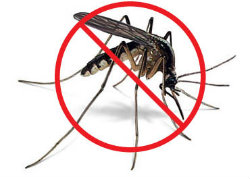
The Wilmington area is buzzing with mosquitoes. Here’s why and what to do.
Tropical Storm Debby’s deluges flooded parts of the Wilmington area that hadn’t seen water in years, turning them into new mosquito breeding grounds.
The social media comments about the Bailey Zimmerman show at Wilmington’s Live Oak Bank Pavilion last weekend were overwhelmingly positive. But a lot of the buzz about the rising country music star’s concert was also about another attendee, and this one wasn’t as welcome as the Illinois-born crooner: Mosquitoes. Many concertgoers lamented about the swarming bloodsuckers that have made venturing outside along the Cape Fear River or near Greenfield Lake a somewhat miserable experience in recent days. Jeff Suggs, head of New Hanover County’s mosquito control program, said Eagles Island across from downtown Wilmington is largely to blame for the recent invasion. “They are swarming and we’re trying to knock them down this week,” he said, mentioning the stepped-up efforts his department and Brunswick County − which manages Eagles Island − are conducting. “But when those floodwater mosquitoes come off, they come off in astronomical numbers.” Thanks to Tropical Storm Debby, the Port City isn’t alone in dealing with swarms of the biting insects even though the soggy weather system left Southeastern North Carolina nearly two weeks ago.
Why are the bugs so bad?
Nowhere is going to see 15 inches or more of rain in just a few days without impacts, and the Cape Fear region is no different. Flooding, which is still impacting some parts of the region, sent water into areas that had largely been dry for months or even years. “Some areas that haven’t had water for years have it now,” Suggs said, adding that some floodwater mosquito eggs that have laid dormant in the soil for years since as far back as 2018’s Hurricane Florence − the last big flooding event for much of the Wilmington area − are likely now getting activated. And thanks to climate change, the local biting season could be about to get worse for longer as spring and fall temperatures increase as more and more heat-trapping gasses are pumped into the atmosphere, allowing mosquitoes to have a longer season to breed, bite, and spread viruses. A 2023 analysis by Climate Central found Wilmington had 11 more “mosquito days” − for a total of 221 − in 2022 compared to 1979. The nonprofit climate communications group defined “mosquito days” as having an average relative humidity of 42% or higher and daily minimum and maximum temperatures between 50 to 95 degrees. While the Port City’s numbers are trending in the wrong direction, it was better than what researchers found in Raleigh-Durham (+27 days), Greenville (+22 day) and Asheville (+22 days). Southeastern North Carolina is home to more than 40 species of mosquitoes, several of which are non-native but have been able to adapt to the region’s climate. That increase in species, their range and potentially numbers is expected to continue as the weather gets warmer and more humid.
Is the surge in mosquitoes a health concern?
From a human health perspective, officials are more worried about the viruses the mosquitoes can carry more than the biting and general annoyance they can bring to people while outside. Those health risks include the Zika virus, dengue fever, Chikungunya virus, Eastern Equine Encephalitis and West Nile virus. Suggs said his department is able to do a lot of its own virus testing, and so far there haven’t been any positive pulls found in trapped mosquitoes so far. Ironically, the region was largely having a good mosquito year prior to Debby largely thanks to the drought that started in spring and continued up until mid-July. “Some traps where we would regularly see 60 mosquitoes a night, we were only seeing four,” Suggs said. “And then Debby came along. But as far as them being a nuisance before that, we were having a good summer.”
What’s being done about it?
Suggs said his crews have stepped up their spraying efforts, doubling back to hit areas − like downtown − that are especially buzzing with the bugs. Officials also treated some areas before Debby hit with larvicide to pre-empt them being used as mosquito hatcheries. In Brunswick County, county spokesperson Meagan Kascsak said crews also have stepped up their spraying efforts post-Debby to try and get ahead of the swarms. But Suggs said residents might just been to grin and bear it for a few weeks until the mosquitoes live out their mercifully short life cycle. “It’s nature,” he said. “We can only battle them so hard.”
How can I protect myself?
Experts say people can help limit their exposure to mosquitoes by removing pools or containers of stagnant water, including in their gutters, from their yards, since most mosquito species don’t generally venture more than a few hundred meters from their homes when hunting. Avoiding activities at dusk and dawn and wearing long clothing also can help limit potential exposures.
Sources and info
Several government agencies offer information on how to make your home less attractive to mosquitoes and the potential threats posed by the bloodsucking insects. Local mosquito control offices also have information about local spraying schedules and how to request additional treatments.
- U.S. Centers for Disease Control and Prevention (CDC):
https://www.cdc.gov/mosquitoes/index.html - N.C. Department of Health and Human Services (DHHS):
https://www.ncdhhs.gov/after-storm-mosquitoes - New Hanover County Mosquito Control:
https://www.nhcgov.com/674/Mosquito-Control / 910-798-6713 - Brunswick County Mosquito Control:
https://www.brunswickcountync.gov/349/Mosquito-Control / 910-253-2515 - Pender County Mosquito Control Division:
https://pendercountync.gov/228/Mosquito-Control-Division / 910-259-1230
Read more » click here
THB Mosquito Control
Current EPA protocol is that spraying is complaint driven
The Town is unable to just spray as they had in the past
. 1) Complaint based
. 2) Citizen request
. 3) Proactively monitor hot spots
They recommend that you get rid of any standing water on your property that you can
Urged everyone to call Town Hall if they have mosquito issues so that they can spray
Factoid That May Interest Only Me –

Black bears are common along the NC coast.
Here’s why and what to know about their habits.
More bears live in the state’s coastal plain than in North Carolina’s mountains. They also are generally larger. And yes, they do hibernate
When people think of bears in North Carolina, most thoughts probably drift to the mountains in the higher elevations of the state and places like Great Smoky Mountain National Park. But black bears − the only bear species found in the Tar Heel State − are found across North Carolina, and their population is actually larger in the state’s coastal plain than in the mountains. Potentially even more surprising to some is that many bears at the coast, especially females, hibernate like their brethren where frost and snow is a lot more common.
Bears at the coast?
Yes, there are bears − lots of them − near North Carolina’s beaches and in its coastal forests and swamps. The ability of the bear to bounce back in the state is one of North Carolina’s great wildlife success stories. Unregulated hunting and loss of habitat led to bears being driven into the most isolated pockets of swamp forests and mountain areas for most of the last century. But starting in the 1970s with the establishment of bear sanctuaries, strict management strategies, and educating the public about the state’s omnivorous residents, bear numbers have surged back. Today, more than 20,000 bears are estimated to roam North Carolina, and more than half are in the eastern part of the state. Coastal North Carolina is also home to some of the largest black bears in the world, thanks to an ample food supply of farmers’ crops, a relatively mild climate, and many large, protected areas − like state game lands and federal wildlife refuges − that offer the bears valuable habitat. According to the wildlife commission, the largest bear ever killed in North Carolina was an 880-pound male taken in Craven County in 1998. The state’s propensity for lots of bears also attracts hunters and fuels economies in many rural areas, with more than 4,000 animals taken during the 2022 bear season − up 11% over 2021 figures. Of those, more than 2,500 bears were taken along the coast. Around the Wilmington area, hunters harvested 34 bears in Brunswick County, 92 in Pender County, and seven in New Hanover County. The popularity, size, and sheer number of bears in Eastern North Carolina also has spawned its own festival, the National Black Bear Festival, which takes place every June in Plymouth, Washington County.
What is hibernation?
In its very basic form, animals enter hibernation as a way to reduce their metabolism in response to a decrease in food supply and sometimes falling temperatures. When bears, in this case, enter hibernation, their internal body clocks slow down. That leads to lower heart rates, reduced breathing, and lower oxygen consumption. The animal’s temperature also drops. According to biologists, this can be by as much as 15 degrees for bears. To prepare for hibernation, bears step up their eating, putting on up to 3 pounds a day in the fall and sometimes into winter. That can mean foraging for a meal for up to 20 hours a day, and they are typically most active at dawn and dusk.
Why do N.C. coastal bears hibernate?
While black bears in colder, northern climates can hibernate for six months or longer, it is generally for shorter periods in North Carolina. But they do hibernate even along the N.C. coast, especially female bears. Males may den for short periods but may also exhibit lethargic behavior during the winter if they stay awake. “Bears studied in eastern North Carolina by radio-telemetry entered dens as early as November and as late as January. These same bears exited dens as early as February and as late as April,” states information on the wildlife commission’s website. “This results in the possibility of bear sightings and roadkills in all months and the misconception that coastal bears do not hibernate. Only human disturbance interrupts these periods of hibernation in North Carolina’s bears.” Females will give birth during their hibernation, only waking up and emerging with her cubs in the spring when they are able to walk and feed on solid food.
Where do they hibernate?
With few rock formations to den in or under in Eastern N.C., coastal bears will often hibernate in thick vegetation on the ground. They also have been found to use tree cavities and burrow under fallen trees and logs. Bears finding accommodations under abandoned or seldom used human structures, like porches and barns, also has been observed.
What about the impact of climate change on N.C. bears?
Scientists are clear that North Carolina is facing a warming climate in the coming years. The only real question is by how much temperatures will increase. As warmer weather becomes the norm, North Carolina’s coastal black bear might start to mimic behavior patterns of bears in other Southern states that already deal with a hotter, year-round climate. That could mean shorter, or no, hibernation for male bears, increased pressure on winter food supplies, and a greater chance of human-bear conflicts as both species share the same space for longer periods of time. But black bears also have proven time and again to be very adaptable to changing conditions, including human encroachment on their habitats. That ability has seen them spread to all of North Carolina’s 100 counties, with number increasing even as the state’s population also continues to rise quickly.
Read more » click here
 Living along the NC coast is increasingly risky.
Living along the NC coast is increasingly risky.
So why are property values still rising?
A new economic model suggests that tax incentives and federal subsidies help fuel coastal property price increases despite growing climate change risks, like sea-level rise
Anyone who has dreamed of owning a property at the beach knows that it’s a goal shared by many. Couple in the growing popularity of coastal living in general − the Wilmington-area’s population jumped from 200,000 in 1990 to more than 450,000 in 2020 − and home ownership is increasingly becoming the privilege of the rich and the few. According to a report by online research publisher Stacker using real estate data from Zillow, Wrightsville Beach has seen a nearly 74% increase in property values over the past five years, with the typical home value now pushing an eyewatering $1.46 million. That makes it the most expensive town in the state, with Bald Head Island a close second with a 76% increase in values in the past five years increasing the average home on the Brunswick County island to $1.3 million. Of the top ten priciest locales in North Carolina, six are coastal communities. But are government actions helping bake in the advantages that high-income property owners have in reaching the coastal dream even as evidence mounts that the risk from climate change and sea-level rise is making living along the ocean an increasingly risky proposition? That’s a question North Carolina researchers attempted to tackle in a recent study published in Nature Communications that looked at how economic incentives and subsidies are impacting coastal property markets. Dr. Dylan McNamara, professor of physics and physical oceanography at the University of North Carolina Wilmington and one of the study’s authors, said the changes occurring along much of the U.S. coast can’t be viewed as just uniquely physical or uniquely economic. “They are linked, a coupled human environmental system where the environment is impacting humans and humans are impacting the environment,” he said. Dr. Martin Smith, an environmental economics professor at Duke University, and McNamara created a new economic model called the Coastal Home Ownership Model (C-HOM) to analyze the long-term evolution of coastal real estate markets. Smith said government actions to protect and enhance coastal communities from environmental risks, such as sea-level rise and stronger and more frequent hurricanes, helps support and boost property values. “What it signals to the market is that this is a fine place to further invest,” he said. Paradoxically, as property values increase and coastal communities become more wealthy, it becomes easier for officials to justify additional and more expensive projects to maintain that economic value in these increasingly vulnerable areas. “We’re shielding these markets from the underlying risks they face, and hence propping up these markets,” McNamara said.
Subsidized sand
Take the history and role of beach nourishment projects, for example. When Congress decided to get the federal government involved in the beach-building business nearly six decades ago, the thinking was oceanfront communities would only require sand roughly once every 10 years or so. The cost of these federal projects would be split between Washington and local governments, with the federal government picking up most of the tab and the state and/or local communities paying the rest. As erosion has increased thanks to sea-level rise and more frequent storms, that’s now been reduced to every couple years − a timeline that doesn’t include federal emergency beach-building projects after major storms. And as more towns see their beaches washing away and confront the high costs of nourishment, thanks to sand scarcity and increased environmental regulations, there is a growing chorus of communities who want their own federal nourishment project. Currently, New Hanover County’s three beach towns and Ocean Isle Beach in Brunswick County are the only North Carolina communities that are guaranteed a periodic injection of fresh sand largely funded by the federal government. Critics say beach nourishment projects funded by federal taxpayers are bad long-term investments that literally just wash away, only benefit rich oceanfront property owners, and have to be repeated every few years to be truly effective. Backers claim beach-building projects are vital to keeping coastal economies running, protecting oceanfront properties and vital infrastructure, and helping communities hit hard by hurricanes rebound.
Analyzing the trade-offs
Both McNamara and Smith said there’s no doubt taxpayer-subsidized projects like beach nourishments have short-term and even medium-term economic benefits. But the cost of defending the shoreline, while propping up property values, is itself increasing. That means more of those costs need to be shouldered by state and local governments if they have the necessary political will and the deep pockets. McNamara and Smith also warn that those rising costs, which beach towns will increasingly have to pass on to their residents or private property owners will have to fund themselves, coupled with surging property values will likely increase the gentrification of many coastal communities − a process that’s already occurring in many beach towns. Some North Carolina coastal communities are already facing these tough decisions. In 2022, North Topsail Beach pulled out of a federal beach nourishment project with Surf City over cost concerns, and Dare County has told residents of Rodanthe, an unincorporated community on Hatteras Island that has some of the highest erosion rates along the entire N.C. coast, that it simply can’t afford to nourish the village’s eroding beach that has already swallowed several homes. Increasing home and flood insurance premiums also are heaping additional pressures on many coastal residents. With the impacts from climate change expected to get worse in the coming decades, the researchers said change is coming. How officials manage the long-term economic adjustments required to adapt to an evolving environment so that they don’t all hit at once could be key to sustaining some of these coastal communities. ”As markets begin to sniff out those impacts, which is to say as the risk begins to increase, values will begin to go down,” McNamara said. “So, the question is when do we see that trajectory, and what path will it take.” Potential options the researchers suggest include managed retreat, possibly including the idea of a purchase and buy-back program so owners can continue to “rent” their homes until they have to move, and building smaller, movable structures that can more readily react to the rising ocean levels instead of the McMansions that are increasingly proliferating along the coast. “There are certainly trade-offs,” Smith said, “but we want people to have a clear view of what those trade-offs are.”
Read more » click here
Hot Button Issues –
Subjects that are important to people and about which they have strong opinions

Climate
For more information » click here.
There’s something happening here
What it is ain’t exactly clear
Here’s what the hottest summer on Earth looked like
Amid an onslaught of lethal heat, surging disease and record-breaking storms, global temperatures this summer climbed to the highest levels on record, according to Europe’s top climate agency.
As floodwaters coursed through Texas and Taiwan, as mosquito-borne viruses spread across the Americas, as lethal heat struck down children on hikes and grandparents on pilgrimage, the world’s average temperature this summer soared to the highest level in recorded history, according to new data from Europe’s top climate agency. Global temperatures between June and August were 1.5 degrees Celsius (2.7 degrees Fahrenheit) above the preindustrial average, the Copernicus Climate Change Service said Friday — just edging out the record set last summer. The sweltering season reached its apex in late July, when Copernicus’s sophisticated temperature analysis program detected the four hottest days ever recorded. Meanwhile, temperatures for the year to date have far exceeded anything seen in the agency’s more than 80 years of recordkeeping, making it all but certain that 2024 will be the hottest year known to science. To Copernicus director Carlo Buontempo, the onslaught of broken records is sobering but not surprising. Humanity continues to burn fossil fuels at an ever-increasing pace, and the concentration of carbon dioxide in the atmosphere is higher than the world has seen in roughly 3 million years, according to the U.N. Intergovernmental Panel on Climate Change. “If you keep doing the same thing, you cannot expect to get any different result,” Buontempo said. “Unless we limit greenhouse gases, we will only see an exacerbation of these temperatures.” This summer came on the heels of an unprecedented year-long stretch in which Earth’s temperature repeatedly met or exceeded 1.5 degrees Celsius above the preindustrial average — a threshold scientists say the world cannot surpass if it hopes to avoid the worst consequences of climate change. The scorching conditions were the product of a complex cocktail of human-caused climate change and a strong El Niño event — a natural phenomenon characterized by warm temperatures in the Pacific Ocean. Though the El Niño was declared over in June, huge amounts of energy remained trapped in the Earth’s system, Buontempo said, fueling the summer’s extraordinary temperatures. The consequences were felt by people on every continent, from world-class athletes competing in the Paris Olympics to refugees fleeing wars. Wildfires fueled by heat and drought raged through the Brazilian Pantanal, a vital wetland known to store vast amounts of carbon. A turbocharged monsoon triggered landslides that killed hundreds of people in India’s Kerala state. The Atlantic Ocean saw its earliest Category 5 hurricane on record, while deadly floods have wreaked havoc from Italy to Pakistan to Nigeria to China. It was a summer of unrelenting humidity and heat too extreme for the human body to withstand. In June, at least 1,300 pilgrims visiting the Muslim holy city of Mecca died amid temperatures of 50 degrees Celsius (122 degrees Fahrenheit). In Mexico, 125 people were reported dead during a July streak of exceedingly hot nights that researchers say was made 200 times as likely by climate change. And in the Arctic archipelago of Svalbard, one of the world’s northernmost inhabited areas, August temperatures soared more than 2.5 degrees Celsius (4.5 degrees Fahrenheit) above the record. Nearly 7,000 weather stations in the United States broke daily temperature records between June 1 and Aug. 31, according to the National Oceanic and Atmospheric Administration. The heat has been blamed for dozens of fatalities, including those of a motorcyclist riding in Death Valley, an infant on a boat trip in Arizona and a California man who collapsed inside his un-air-conditioned home. In Maricopa County, Ariz. — one of the few jurisdictions to methodically track and report on the problem — officials have attributed at least 177 deaths this year to heat-related causes. Some of the most unusual heat this summer occurred in Antarctica, where plumes of warm air disrupted the deep freeze of the six-month polar night. Temperatures on the continent spiked about 28 degrees Celsius (50 degrees Fahrenheit) above usual levels, and the surrounding sea ice shrank to nearly unprecedented lows. The changes in Antarctica are especially eye-opening, Buontempo said, because the region has historically been isolated from the rest of the warming planet by a strong polar vortex and the swirling Southern Ocean. But since 2023, the extent of sea ice around Antarctica has been about 1 million to 2 million square kilometers less than in any year since satellite observations began. “This is very different from what we have seen in the past,” Buontempo said. “Even people working on sea ice are puzzled by the extent and the rapidity of the decline.” When Earth’s four hottest days were recorded in July, climate scientist Johan Rockström told The Washington Post that the planet was probably the warmest it has been since the last ice age began more than 100,000 years ago. Climate clues contained in ice cores, lake sediments and tree rings show that global temperatures are shifting out of the range they’ve occupied for most of human history. “We’re scratching 1.5 [degrees above preindustrial], and we’ve experienced how it hurts the economy, people and societies across the entire world,” said Rockström, director of the Potsdam Institute for Climate Impact Research. “But within five to 10 years … what we’re experiencing right now will be looked back upon as a mild year,” he added. “We are inevitably in for a rough ride.”
Read more » click here
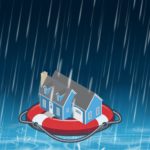
Flood Insurance Program
For more information » click here
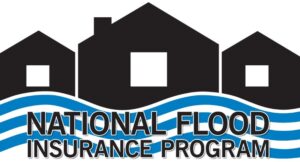
National Flood Insurance Program: Reauthorization
Congress must periodically renew the NFIP’s statutory authority to operate. On March 22, 2024, the president signed legislation passed by Congress that extends the National Flood Insurance Program’s (NFIP’s) authorization to September 30, 2024.
Congress must now reauthorize the NFIP
by no later than 11:59 pm on September 30, 2024.

GenX
For more information » click here

Homeowners Insurance
For more information » click here
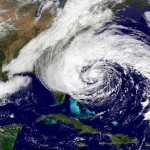
Hurricane Season
For more information » click here
 NOAA predicts above-normal 2024 Atlantic hurricane season
NOAA predicts above-normal 2024 Atlantic hurricane season
Read more » click here
 Brunswick County reminds public to prepare for 2024 Atlantic hurricane season
Brunswick County reminds public to prepare for 2024 Atlantic hurricane season
June marks the start of the Atlantic hurricane season, which runs from June 1 through November 30, and the National Oceanic and Atmospheric Administration (NOAA) predicts that it will be an above-normal hurricane season this year. Brunswick County encourages all community members to start preparing now.
For the 2024 Atlantic hurricane season, NOAA is forecasting a range of 17 to 25 total named storms. Of those, 8 to 13 could become hurricanes, including 4 to 7 major hurricanes.
Based on 30 years of climate data collected from 1991 to 2020, NOAA found that the average Atlantic hurricane season has 14 named storms (winds of 39 mph or higher), 7 hurricanes (winds of 74 mph or higher), and 3 major hurricanes (category 3, 4, or 5; with winds of 111 mph or higher).
“Many people move to Brunswick County who have never experienced a hurricane before,” Brunswick County Emergency Management Director David McIntire said. “Living in our coastal region comes with the risk of life-threatening weather events such as hurricanes. We urge all our residents and visitors to stay prepared, stay informed, and stay ready.”
Ways to Prepare for Hurricane Season
- Make a plan. Create and practice a family emergency plan that includes all members of your household and pets. Discuss who your emergency contacts are, your evacuation route, shelter plan, forms of identification for your pets and animals, how you will receive emergency alerts, where you will store important documents, and what you will put in your emergency supply kit.
- Build a kit. An emergency kit is vital for your survival in situations where help might not be easily accessible due to power outages and road damage. When preparing an emergency kit, it is recommended to prepare three to seven days-worth of medicine, water, and non-perishable food for each person and pet in your home.
- The North Carolina Cooperative Extension – Brunswick County Center has prepared a hurricane cookbook and a Hurricane Meal Kits program to help individuals and families prepare nutritious meals ahead of an emergency.
- Stay informed. Sign up for ReadyBrunswick emergency notifications, subscribe to the County’s email list, sign up for the Access and Functional Needs Registry, and follow Brunswick County and the National Weather Services (NWS) on social media.
- Know your zone. Visit the North Carolina Department of Public Safety’s Know Your Zone webpage to view the area’s most at risk of storm surges and flooding in Brunswick County. Local officials use the zones to determine which areas should be evacuated in case of an emergency.
- Know the terms. A Hurricane Watch indicates hurricane conditions are possible. A Hurricane Warning indicates hurricane conditions are expected.
- Check your insurance. Before an emergency strikes, review your insurance policies to ensure your property is covered for any flooding or natural disasters that could occur. Flood insurance, which is not normally part of homeowner’s insurance policies, is encouraged for North Carolina residents.
For more hurricane preparedness tips from Brunswick County, visit brunswickcountync.gov/hurricanes.
Find information on emergency planning and hurricane safety online at ReadyNC.gov or Ready.gov.
View updates from the National Hurricane Center, a real-time emergency weather map, and additional online resources at nhc.noaa.gov.
Read more » click here
Highly active hurricane season likely to continue in the Atlantic
Near-record sea surface temperatures and the possibility of La Nina are key factors
Atmospheric and oceanic conditions have set the stage for an extremely active hurricane season that could rank among the busiest on record. With the peak of hurricane season quickly approaching, NOAA’s National Weather Service urges everyone to know their risk; prepare for threats like damaging winds, storm surge and inland flooding from heavy rainfall; and to have a plan if asked to evacuate. In their routine mid-season hurricane outlook update, forecasters from NOAA’s Climate Prediction Center updated the number of expected named storms to 17-24 (with winds of 39 mph or greater), of which 8-13 could become hurricanes (winds of 74 mph or greater), including 4-7 major hurricanes (winds of 111 mph or greater). This updated outlook is similar to the initial outlook issued in May; it includes totals for the entire six-month hurricane season, including the 4 named storms (2 tropical storms and 2 hurricanes) to date.
Hurricane season runs from June 1 through November 30.
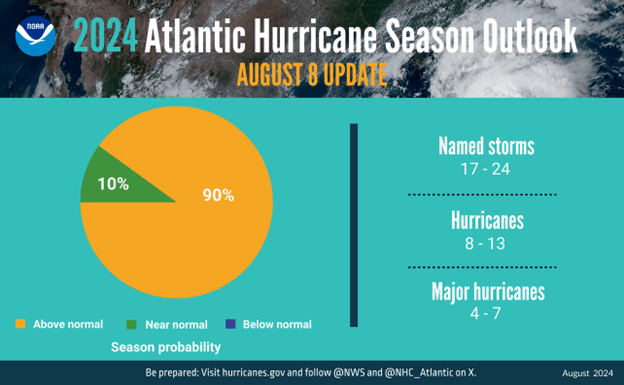
“The hurricane season got off to an early and violent start with Hurricane Beryl, the earliest category-5 Atlantic hurricane on record,” said NOAA Administrator Rick Spinrad, Ph.D. “NOAA’s update to the hurricane seasonal outlook is an important reminder that the peak of hurricane season is right around the corner, when historically the most significant impacts from hurricanes and tropical storms tend to occur.” In the Atlantic basin, a typical season will yield 14 named storms, of which seven become hurricanes and three become major hurricanes. Atmospheric and oceanic conditions continue to support an above-normal 2024 Atlantic hurricane season, with a 90% probability of this result. 2024 has only a 10% chance of a near-normal season and a negligible chance of a below-normal season.
The 2024 Atlantic hurricane season has already brought significant impacts:
- Tropical Storm Alberto formed on June 17, and over the following days it brought nearly a foot of rain to parts of Texas and New Mexico, triggering flash flood emergencies.
- On July 1, Hurricane Beryl became the earliest category-5 storm on record in the Atlantic basin. Beryl caused catastrophic damage and approximately 20 fatalities in several islands in the Caribbean Sea, with an additional preliminary death toll of about 25 people in Texas, Louisiana, and Vermont.
“Hurricane Beryl broke multiple long-standing records in the Atlantic basin, and we’re continuing to see the climatological hallmarks of an active season,” said Matthew Rosencrans, lead hurricane season forecaster with NOAA’s Climate Prediction Center. “Sea surface temperatures remain abnormally high, and La Nina is still expected to emerge during the hurricane season, so the time to prepare is now.”
Factors that could influence this year’s forecast
The Atlantic ocean basin is expected to be remarkably active due to several factors:
- Warmer-than-average sea surface temperatures in the tropical Atlantic Ocean and Caribbean Sea.
- Reduced vertical wind shear.
- Weaker tropical Atlantic trade winds.
- An enhanced west African monsoon.
These conditions are expected to continue into the fall. Of note, the dry Saharan air that prevented tropical storm development during portions of the middle of the summer is expected to subside in August.
Potential climate influences
An ongoing climate factor in the Atlantic basin is the continued warm phase of the Atlantic Multi-Decadal Oscillation, which reappeared in 1995 and has been favoring more active hurricane seasons ever since. Another factor this year is the possibility of La Nina developing in the coming months. Indicative of cooler-than-average sea surface temperatures in the equatorial regions of the eastern Pacific Ocean, La Nina can further weaken the wind shear over the Atlantic Basin, which enables storms to develop and intensify.
About NOAA’s Hurricane Season Outlook
NOAA’s Hurricane Season Outlook is for overall seasonal activity and is not a landfall forecast. Landfalls are largely determined by short-term weather patterns, which are only predictable within about a week of a storm potentially reaching a coastline. NOAA’s National Hurricane Center provides tropical weather outlooks out to five days in advance, provides track and intensity forecasts for individual storms and issues watches and warnings for specific tropical storms, hurricanes, and the associated storm surge.
Stay informed: Consult the National Hurricane Center website, hurricanes.gov, for the latest about tropical storm and hurricane activity in the Atlantic and Pacific Ocean basins. You can also follow updates from NHC on X at @NHC_Atlantic.
Read more » click here
5 reasons behind the historic absence of tropical storms this hurricane season
It has been the longest stormless streak in the Atlantic Basin in over 50 years, and AccuWeather meteorologists point to several factors that have put a temporary pause on the 2024 hurricane season.
The first week of September is usually one of the busiest times of the year for tropical storms and hurricanes, but there is an eerie silence across the Atlantic Ocean. AccuWeather adjusted its hurricane forecast amid the historic lull, with 2024 being the first time in 56 years a new named storm has not developed between Aug. 13 and Sept. 3. If nothing develops by Sept. 11, it would become the longest streak without a named storm around peak hurricane season since at least the start of the satellite era in 1960. There are several reasons behind the lull, some more meteorologically complex than others.
Delayed arrival of La Niña
A rapid collapse of El Niño was forecast to be swiftly replaced by La Niña, which, despite being linked to water temperatures near the equator of the Pacific Ocean, can have a major influence across the Atlantic Ocean. Typically, La Niña results in less disruptive winds, known as wind shear, making conditions prime for tropical development across the Atlantic. However, La Niña has yet to officially develop. “In March, it appeared that a transition to La Niña would occur sometime in the early to middle portions of the summer. Now it looks like La Niña may not start until the fall and might end up rather weak,” AccuWeather Lead Hurricane Expert Alex DaSilva said.
Abundance of dry, dusty air
Tropical storms and hurricanes need moisture-rich air to thrive, but such conditions have been scarce leading up to the peak of hurricane season. “There was an unusually high amount of dry air and Saharan dust across the Atlantic during the month of August,” DaSilva said. The dry, dusty air is predicted to decrease in the coming weeks, leading to conditions more favorable for tropical development.
‘Convoluted’ African wave train
During hurricane season, clusters of thunderstorms over Africa eventually emerge over the Atlantic Ocean. These become known as “tropical waves,” and when conditions are right, they can strengthen into tropical storms and hurricanes. But as of late, the train of tropical waves emerging off the coast of Africa has been “convoluted,” according to AccuWeather Senior Meteorologist Alex Sosnowski. Many thunderstorms in recent weeks have taken a rare path, drenching the Sahara Desert. When the perspective tropical waves do emerge over the Atlantic Ocean, they are encountering too much dry air and wind shear and struggle to develop, Sosnowski said.
Warm vs cool water
Water across nearly all of the Atlantic hurricane basin is incredibly warm, which can fuel any tropical system that does develop. However, one area just off the west coast of Africa is much cooler, a phenomenon known as “Atlantic Niña.” “Research has shown Atlantic Niñas can potentially lead to less tropical activity in the Atlantic,” DaSilva said. “The reasoning behind this cooling in the Atlantic is still a bit unclear.”
Stable upper atmosphere
Another piece to the meteorological puzzle explaining the recent lull in tropical activity is the unusually warm conditions high in the atmosphere. “Temperatures in the upper atmosphere in the tropics have been well above average this year and above 2023 levels,” DaSilva said. Warm air high above the ocean can cause the atmosphere to be more stable, which makes it more difficult for thunderstorms to develop and organize into a tropical depression or storm. “This could be tied to climate change and a warmer planet,” DaSilva added.
How does the rest of the 2024 Atlantic hurricane season look?
AccuWeather is predicting 16 to 20 named storms this season, lower than the initial forecast of 20 to 25 but still above the historical average of 14. “We don’t want anyone to let their guard down even though we are now forecasting fewer storms in total. We expect two to four more direct impacts to the United States this season. It only takes one powerful hurricane or slow-moving tropical storm to threaten lives and cause devastation,” AccuWeather Chief Meteorologist Jonathan Porter said. The peak of the Atlantic hurricane season is Sept. 10, and it officially ends on Nov. 30.
Read more » click here
What happened to predictions of a ‘historic’ hurricane season?
The Atlantic just made history for an unexpected distinction: The longest stretch without a single late-summer cyclone. Meteorologists are concerned delicate public trust is at risk.
As weeks went by with no hurricane activity, Phil Klotzbach could feel the pressure building. He and the rest of the meteorology world had predicted a potentially historic hurricane season, and yet, during what would normally be the most active stretch of tropical storms, the Atlantic Ocean was eerily quiet. Even his running buddies, with no knowledge of meteorology, began to ask: Where are all the hurricanes? As the author of one of the most trusted and longest-running hurricane season outlooks, he considered issuing an unprecedented midseason update in late August acknowledging the chances this year’s forecast could be a bust. He held off in case a new system formed over Labor Day weekend. That didn’t happen. Instead, the Atlantic made history for an unexpected and confounding distinction: The longest stretch in more than half a century without a single late-summer cyclone, a time of year when several often churn at once. Though two months of storm risks still lie ahead, the astonishing lull has meteorologists wrestling with confusion and criticism, while striving to protect delicate public trust. “Everyone was going big,” Klotzbach said, citing predictions of a flurry of more than two dozen storms. “It wasn’t like there were two or three models that said something else.” There are questions about whether planetary warming could be so extreme, it supercharged the storms that managed to form but has also allowed fewer to materialize. The quiet Atlantic stands in contrast to a dynamic Pacific typhoon season and yet another record-hot Northern Hemisphere summer that spread deadly temperatures, massive fires and overwhelming floods around the globe. Even as meteorologists can detect factors contributing to the lull, they are struggling to understand why those factors have overwhelmed conditions that might otherwise fuel intense storm after storm. Many who warned the public to prepare for a dangerous summer and fall are now caught in the awkward position of almost rooting for storms, lest they end up eating crow — and losing the public’s confidence — when their predictions fall flat come November. Initial forecasts of a historic season seemed spot-on when Beryl became the earliest Category 5 hurricane ever seen in July. The storm devastated Caribbean islands and Texas, but only reassured Klotzbach of Colorado State University’s hurricane season outlook, which he has led for nearly 20 years. His prediction included several storms of Beryl’s caliber. Others agreed. “It seemed like such an obvious, easy forecast,” Klotzbach said. Instead, nearly a month passed without any new storms forming in the tropical Atlantic. A weather system in the Gulf of Mexico ended the streak Monday when it became Tropical Storm Francine. It could strengthen and strike the Louisiana or northeast Texas coast as a hurricane on Wednesday. “It’s definitely taken me by surprise,” he said of the long lull. “I think any meteorologist being honest would say the same.”
Ripe for hurricanes
The ingredients to support an active hurricane season are abundant, just as forecasters had predicted. Ocean temperatures have been extraordinarily warm across the Atlantic (and much of the globe) for a year and a half, providing stores of fuel for storms that will last at least until the Northern Hemisphere’s winter. And a La Niña climate pattern — known for producing favorable wind patterns for Atlantic storms — has been building for months. Its arrival is probably imminent. That outlook was enough for confident predictions of one of the most active hurricane seasons in a long string of active seasons. “This season is looking to be an extraordinary one,” NOAA Administrator Rick Spinrad said in May. But for much of the past month, those conditions have not fueled storms. The trend could be a preview of future decades, in which the Intergovernmental Panel on Climate Change has predicted climate change could make hurricanes less frequent, while encouraging a higher proportion of them to become monster storms. So far this year, the tropical atmosphere has been much too stable for storms to develop because of unusual warming observed in the upper layers of the troposphere. Normally, a clash between surface warmth and cold air aloft helps fuel rising atmospheric motion that incites storm development. Meanwhile, many atmospheric seeds of what could become hurricanes have fizzled as they drifted from African monsoon clouds into the Atlantic much farther north than normal, just outside a band of tropical waters most hospitable to budding storms. The monsoon is strong, something that would normally mean more waves of atmospheric disturbance cast into the Atlantic. Rain has poured on parts of the Sahara that haven’t seen any in 40 years, while other parts of West Africa have seen double their normal rainfall, said Matthew Rosencrans, NOAA’s lead seasonal hurricane forecaster. But the monsoon is too far north to have an impact on the Atlantic, it seems — something meteorologists have never had to account for. “It’s kind of hard to predict something in the system that you’ve never seen before,” Rosencrans said.
Fears of a busted forecast
It’s a scenario all meteorologists are prepared for but hope to avoid: a busted forecast. And given how dire their warnings were months ago; it is testing them like no hurricane season in recent history. They are the first to admit seasonal forecasting barely resembles the sort of higher confidence weather predictions that guide decisions about whether to leave the house with an umbrella or put on a heavy jacket. Seasonal forecasts can evaluate whether storms are more likely to form. But, because they are made months in advance, they don’t have the ability to foretell where an African monsoon will land, for example. “These are factors that are not fully understood by anyone,” said Jon Porter, chief meteorologist for AccuWeather, which recently downgraded its own predictions for this year’s hurricane season. Climate change may be making it even harder to make long-term hurricane predictions, Rosencrans said. Forecasters have to account not just for how known conditions have contributed to storm activity in the past, but how changing Earth systems could affect storm activity in the future. When he was studying to become a meteorologist, he remembers learning that there are two kinds of forecasters: those who have already gotten it wrong and those who will. “It’s in those cases when it doesn’t go correct when you can learn the most,” Rosencrans said.
Facing public doubt
While they search for those lessons, forecasters are standing by their predictions. They cite statistics that show how much time and risk remains: “There’s still 60 percent of the hurricane season left to go,” Rosencrans said. “We could still end up with another 10 named storms this year, easily.” That’s because forecasters like Klotzbach hear plenty from the doubters. “Why would you trust forecasts, literally ever?” one X user responded to Klotzbach in mockery on Wednesday. “Safe to assume federal monies encourage aggressive forecasts for severe weather,” another suggested. If more hurricanes don’t materialize soon, the confusion could have lasting impact. Research has shown the “cry wolf” effect — when warnings of extreme weather don’t come true — can cause people to disregard future forecasts. Careful communication of forecast uncertainties can counteract that, said Tobias Vorlaufer, a researcher at the Leibniz Centre for Agricultural Landscape Research in Germany. But what if forecasters don’t know how to issue such caveats? “Our brain is just wired in a way to really remember when forecasts were wrong,” Vorlaufer said. “We kind of forget the seasons where the forecast was more accurate.” For Klotzbach, who ended up writing a 30-page account of why this hurricane season has confounded expectations, transparency is the best strategy, he said. He knows the dire forecasts mean more people are paying attention to what is happening in the tropical Atlantic. And he knows that means public trust in his work is at risk. “That’s not something you want to lose,” he said.
Read more » click here
This hurricane season is confounding experts and defying forecasts.
What the heck is going on?
It’s early September – what should be the busiest stretch of hurricane season. Forecasters predicted this one was going to be bad: storm after storm, the most bullish forecasts on record. Instead, the Atlantic Ocean is enveloped in a rare and strange calm that has flummoxed forecasters and reset their expectations. And the whole thing could be a glimpse at what’s to come as the planet gets hotter. Despite ideal conditions that fueled pre-season predictions of upwards of 20 named storms, the immediate prospects for one are low, and none have formed in the Atlantic since Ernesto in mid-August – a streak unmatched in 56 years. “If you had told me a month ago that nothing would (develop) after Ernesto I wouldn’t have believed you,” said Phil Klotzbach, a hurricane expert and research scientist at Colorado State University. “It’s really surprising.” The strange season has been influenced by extreme atmospheric conditions that are a byproduct of climate change driven by fossil fuel pollution, experts said. And it could also be a “lens” into the more volatile storm behavior of the future, said Matthew Rosencrans, lead hurricane season forecaster with NOAA’s Climate Prediction Center. Scientists have long said a warming world will ultimately result in fewer but stronger storms something this season has born the fruit of. Hurricane forecasters, including Klotzbach, were predicting the calendar flip from August to September would revive the season. Many widely used forecast models signaled the same thing. It didn’t pan out. The conditions ideal for hurricane development – warm ocean water, minimal storm-disrupting upper-level winds, and plenty of moist air – are there, but the storms aren’t happening. Lesser-understood atmospheric factors have gotten in the way, Klotzbach said, and they have ties to global warming. Take that extremely warm ocean water: The Atlantic has been near-record warm since before the season began. It fueled record-breaking Category 5 Hurricane Beryl, a hurricane with such immense strength so early in the season that it was considered a potential harbinger of a busy season to come. But warm water can’t intensify storms if they never make it there in the first place. Almost all hurricanes originate from stormy weather coming off the coast of Central Africa. Since about mid-summer, these hurricane seeds have been pushed farther north than usual – even into one of the driest areas on Earth – the Sahara Desert. They have also exited Africa much farther north than normal and have been stunted as a result. Dry, dusty air and cooler ocean temperatures here, off the continent’s northwest coast, have combined to choke off storms. The northward shift could be tied to the interaction between extremely warm water in the tropical Atlantic and a small patch of abnormally cool water – a burgeoning Atlantic Niña – near the equator, according to Klotzbach and his group at CSU. The African monsoon is supercharged with a ton of moisture, something that can actually delay tropical storm development, a study published in June in the Journal of Advances in Modeling Earth Systems found. It turns out there’s a Goldilocks zone for hurricanes – dry conditions will starve thunderstorms of the fuel they need, but too much can make them so messy that they can’t organize into a cyclone. The moisture needs to be just right. “For the first time, we’re seeing that this is actually the case,” said the study’s lead author, Kelly Núñez Ocasio, who is also an assistant professor at Texas A&M University. “We’re seeing it right now in the Atlantic hurricane season.” This scenario could happen more frequently as the world continues to warm because the atmosphere will hold onto more moisture. Further research is needed to definitively determine the change over time, Núñez Ocasio cautioned. Very warm conditions tied to the climate crisis both at Earth’s surface and higher up in the atmosphere are also limiting the available chaotic energy tropical systems need to form. Along with warming at the surface, even the highest levels of the troposphere – the layer of Earth where all life and most weather happens – are warming over time, a 2023 study published in the journal Nature found. This trend could potentially keep storminess in the Atlantic much more subdued during the hottest part of the year, similar to what unfolded this year. The weather weirdness means there are no immediate legitimate storm prospects. If no storms develop by the typical peak of hurricane season on September 10, it would mark a peak-of-season quiet streak unmatched in nearly 100 years, according to hurricane expert Michael Lowry. Still, experts warn the season isn’t finished and could show signs of life soon. More than 40% of all tropical activity in a typical season occurs after September 10, so there’s plenty of precedent for storms to reinvigorate the Atlantic in the following months. Klotzbach believes the season could reawaken by the second half of September, when these limiting factors could start to lessen. And as the season drags on, the area where storms start to form later in hurricane season creeps closer to the Caribbean and the US coastline, including in the Gulf of Mexico which is record-warm. Plus, La Niña is expected to build throughout the fall and could give a boost to activity in October and November. Anyone in areas at risk for tropical impacts shouldn’t let their guard down because of the recent lull in activity. Storms “will come back,” Klotzbach cautioned. “I still don’t see this season ending well.”
Read more » click here
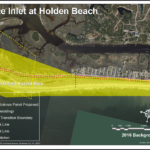
Inlet Hazard Areas
For more information » click here
.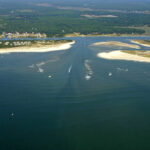
Lockwood Folly Inlet
For more information » click here.

Seismic Testing / Offshore Drilling
For more information » click here.

Offshore Wind Farms
For more information » click here
Why development of Brunswick County’s offshore wind farms has largely moved onshore
Duke Energy has included offshore wind in its latest plan to reduce carbon emissions. Now state regulators are reviewing the proposal
The wind hasn’t stopped blowing, and the waters just off the Brunswick County coast are as prime a spot for an offshore wind farm as they always have been. But after a flurry of announcements and activity in previous years, including offshore survey work last summer, things have been largely quiet on the ground and in the waters roughly 22 miles south of Bald Head Island. That’s not the case in Raleigh, though − and that’s largely where the future of the Brunswick wind farms will be decided. “Industry is waiting to hear if the N.C. Utilities Commission is going to green light offshore wind as part of the state’s electricity mix in the coming years,” said Katharine Kollins, president of the Southeastern Wind Coalition, a nonprofit that advocates for wind energy development in the Southeastern U.S. “It’s hard for them to consider spending huge sums of money on these projects if they don’t have some guarantees and cost certainty.”
Pros and cons
Offshore wind is seen by clean energy advocates as a key component in helping governments de-carbonize their energy grids by reducing their reliance on dirty, greenhouse gas-spewing power sources like coal and natural gas. That includes North Carolina, which has a stated goal of reducing its 2005 level of carbon emissions by 70% by 2030 − although Duke Energy would like to see that goal pushed back to 2035 − and becoming carbon-neutral by 2050. In 2022, TotalEnergies Renewables USA and a Duke Energy subsidiary paid the federal government a combined $315 million to lease nearly 140 miles of ocean off Brunswick County for a pair of huge wind farms. If fully developed, which would occur sometime in the early 2030s, the wind farms could produce enough power to supply 750,000 homes. The pair of wind farms proposed for Long Bay will join another offshore wind farm planned for waters roughly 27 miles off Kitty Hawk on the Outer Banks. That project is farther along than the Southeastern N.C. wind projects. While embraced by clean energy advocates, offshore wind farms have their critics. The projects are very capital intensive to build, although those costs drop dramatically once the turbines are up and running. Some coastal residents are also concerned that the giant windmills will damage their ocean “viewscapes,” although officials have said the Brunswick turbines will be next to invisible from the county’s south-facing beaches. Concerns also have been raised about the offshore turbines impacts on marine life, specifically marine mammals like the highly endangered North Atlantic right whale.
Offshore wind moves center stage
As the state’s largest utility, Duke is largely driving the train on what sort of mix of power production sources will be needed to meet the state’s carbon-reduction goals in the electricity sector while also keeping the lights on at an affordable price for consumers. In 2021, Cooper signed an executive order that doubled down on the state’s commitment to offshore wind power, with goals of 2.8 gigawatts (GW) off the North Carolina coast by 2030 and 8 GW by 2040 − enough to power roughly 2.3 million homes. But Duke’s initial Carolinas Resource Plan, basically a road map on how the utility proposed to reduce its future carbon emissions in both Carolinas, only had offshore wind as an option to meet future power needs. That changed in January, however, when the utility, citing a projected surge in future electricity demand, proposed moving forward with plans to add 2.4 GW of offshore wind to its grid in the 2030s as part of its updated carbon plan. That plan, which environmentalists and clean energy advocates are contesting as still being too reliant on old energy sources like natural gas plants instead of focusing on renewables like wind and solar, is now being reviewed by the utilities commission. Duke spokesperson Bill Norton said the utility has asked regulators to allow it to gather additional information to make sure integrating power produced by offshore wind farms into the company’s power grid is financially viable. That work would include pricing information, an issue that derailed several other proposed offshore wind projects after companies decided they couldn’t build and operate the wind farms at the contracted price utilities had agreed to buy the power at. “TotalEnergies looks forward to the (utilities commission) order in December 2024 and additional approvals from N.C. and S.C. as necessary, which will inform the next steps for development activities in 2025,” said company spokesperson Elizabeth Bennett in an email.
‘Moving in a positive direction’
Offshore wind projects, while certainly green, have run into some rough financial waters in recent years. That stormy weather included efforts by companies to renegotiate their contracts with utilities due to rising construction costs, higher inflation and supply chain disruptions, surging interest rates, and the war in Ukraine. Those headwinds culminated in some wind developers in New York and New England deciding to walk away from projects rather than get stuck in money-losing endeavors. But Kollins said the offshore wind sector is rebounding, with several large farms in the Northeast now sending power onshore and some of the financial and supply chain issues that plagued earlier projects getting ironed out as the industry matures in the U.S. “There are a lot of good things happening for offshore wind now,” she said. “Certainly, challenges for the industry remain, but I think it’s definitely moving in a positive direction.”
Read more » click here
Things I Think I Think –
 Eating out is one of the great little joys of life.
Eating out is one of the great little joys of life.
Restaurant Review:
The Dinner Club visits a new restaurant once a month. Ratings reflect the reviewer’s reaction to food, ambience and service, with price taken into consideration.
///// August 2024
Name: Parson’s Table
Cuisine: American
Location: 4305 McCorsley Avenue, Little River SC
Contact: 843.249.3702 / www.parsonstable.com
Food: Average / Very Good / Excellent / Exceptional
Service: Efficient / Proficient / Professional / Expert
Ambience: Drab / Plain / Distinct / Elegant
Cost: $38 Inexpensive <=20 / Moderate <=26 / Expensive <=35 / Exorbitant <=60
Rating: Two Stars
Established as a restaurant in1978, they have stood the test of time. The restaurant has been consistently receiving rave reviews. They occupy what was the Little River Methodist Church that was constructed in 1885. Upon walking through the antique doors, every room is filled with stained glass pieces. It was just all right, neither the food nor the service was what one would expect from an upscale dining establishment. The prices are those of an upscale restaurant and they just aren’t one. They used to be an exceptional value, unfortunately that is no longer the case.
 Cloud 9
Cloud 9
9 Estell Lee Pl
Wilmington, North Carolina 28401
910.726.9226
Rooftop Bar
https://cloud9ilm.com/
Enjoy panoramic views from the Cloud 9 rooftop bar which overlooks picturesque downtown Wilmington. This premier open-air rooftop venue is located on the Riverwalk in downtown Wilmington on the ninth floor of the Embassy Suites. The bar is open seven (7) days a week at 4:00 PM and is currently serving almost fifty (50) different brews on tap and in cans and more than 20 wine selections. They also offer live music Thursday through Saturday evenings throughout the summer months. This is a must visit the next time you are in Wilmington.
Dining Guide – Local
Old places, New faces
Name: SmacNally’s
Location: 1045 B-Var Road, Supply NC
This spot that was once known as Betty’s Waterfront Restaurant before reopening in 2020 as LouLou’s Waterfront Restaurant. LouLou’s has permanently closed. They weren’t closed long before a new eatery was announced for the space. Owners of SmacNally’s Waterfront Bar & Grill are planning a second location for 1045 B-Var Road S.W. in Supply.
Popular Outer Banks seafood restaurant planning a second location in Brunswick County
For 25 years, SmacNally’s Waterfront Bar & Grill has been serving fresh seafood and burgers in Ocracoke. Now, the owners are planning to expand the brand for the first time, and they’ll be doing so in Brunswick County. Scott McNally announced that they’ll be taking over the recently closed LouLou’s Waterfront Restaurant on the Intracoastal Waterway at 1045 B-Var Road S.W. in Supply. “It’s time,” McNally said. “We’ve put a lot into this brand and it’s time to grow.” McNally has decades of experience in restaurants, and together with partners Tom Burruss, Matt Bacheler and Persell Morgan, they have more than 120 years in hospitality. One caveat is they wanted to continue with the waterfront restaurant tradition that’s close to local seafood. It made the Holden Beach area ideal. “At SmacNally’s we work with fishermen, and we have a fish cleaning counter right at the end of our dock. They bring it right from there, to our restaurant. It’s usually just hours from the ocean.” That dock-to-kitchen model is one they’d like to continue in Holden Beach. If that’s not possible, they still plan to work with local markets for the freshest seafood, he said. LouLous restaurant opened in fall 2020 in what was formerly Betty’s Waterfront Restaurant. The space has indoor and outdoor dining, a bar area and slips for boat parking. McNally said they hope to open the SmacNally’s in May. “Or sooner, if possible,” he said.
Read more » click here

.
..
They were supposed to open in May,
it’s September and they still have not opened yet.
Dining Guide – Local * Lou’s Views (lousviews.com)
Dining Guide – North * Lou’s Views (lousviews.com)
Dining Guide – South * Lou’s Views (lousviews.com)
Restaurant Reviews – North * Lou’s Views (lousviews.com)
Restaurant Reviews – South * Lou’s Views (lousviews.com)
Book Review:
Read several books from The New York Times best sellers fiction list monthly
Selection represents this month’s pick of the litter

THE FURY by Alex Michaelides
A retired movie star brings a group of her friends to her private Greek island for Easter. The seven people are trapped on the isolated remote island that is cut off by the fury, a wild unpredictable wind. One of them will not survive the night. It’s a modern psychological thriller, basically a takeoff of the locked-room mystery.
That’s it for this newsletter
See you next month
Lou’s Views . HBPOIN
. • Gather and disseminate information
. • Identify the issues and determine how they affect you
. • Act as a watchdog
. • Grass roots monthly newsletter since 2008


